2016 NBA draft: Needs for every team

Your teams. Your favorite writers. Wherever you want them. Personalize SI with our new App. Install on iOS or Android.
Hope springs eternal every summer when the NBA draft rolls around. No matter what happened the season before, the draft gives pick–holding teams reason for optimism each season. With each pick comes a chance to solve a problem, find a steal or draft a potential star.
So what does your team need in the 2016 NBA draft? What picks do they have? What weaknesses will they look to strengthen?
With that in mind, SI.com examined all 30 NBA teams and assessed what their biggest needs are heading into draft night.
Be sure to check out our final Big Board ranking of the top 60 prospects as well as our most recent Mock Draft.
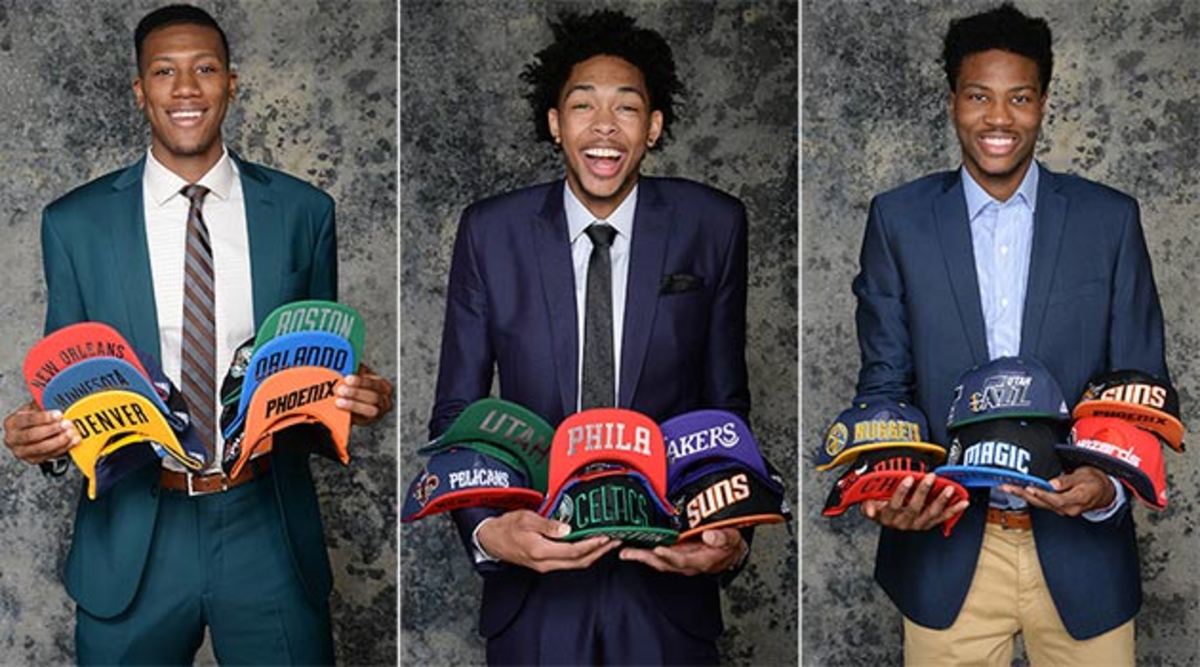
Atlanta Hawks
Team needs: Scoring, rebounding, wing depth
Picks: 21, 44, 54 | Update: Acquired No. 12 from Utah
2015–16 results: 48–34, lost in East semifinals
We don’t know what uniforms Al Horford and Kent Bazemore (free agency) or Jeff Teague (well-publicized trade bait) will wear in a month, but we do know that the Hawks struggle on the glass (28th in rebounding rate was actually worse than last season), their core is aging and Dennis Schröder might be the future. They badly need another player—preferably on the perimeter—who can score the basketball and create his own looks. Expect Atlanta to take an overseas stash or make a deal with at least one of its second-round picks. The real bad news is there may not be a legitimate foundational piece for the Hawks to add to their core at 21.
Update: After adding the No. 12 pick via trade and dealing Jeff Teague, the Hawks will have an extra opportunity to net another piece.
Team needs: Star power, interior defense, trade partners
Picks: 3, 16, 23, 31, 35, 45, 51, 58
2015–16 results: 48–34, lost in first round
Boston’s war room will be one huge frenzy Thursday night as they figure out what to do with a league-high eight selections. Isaiah Thomas is nice, but the Celtics need a bonafide go-to guy and they know it. Unfortunately, they missed out on the Ben Simmons-Brandon Ingram sweepstakes, and that leaves no solution to the problem at No. 3. Everyone knows Boston would love to trade that pick, and if Danny Ainge can find a viable return, expect him to make a deal.
Further down the board, the Celtics can afford to throw darts and clearly won’t be able to roster every selection right away. Adding to their frontcourt, perhaps with an overseas prospect, makes sense. They could also still use a shooter given a lack of immediate returns on the R.J. Hunter and James Young experiments. Expect teams looking to move into the draft to have Boston on speed dial.
• Open Floor Podcast: NBA Mock Draft roundtable: Projecting first round
Brooklyn Nets
Team needs: Guards, wings, everything
Picks: 55 | Update: Acquired No. 20 from Indiana
2015–16 results: 21–61, missed playoffs
Alas, the ill-fated gambits of years past have left Brooklyn with a near-empty cupboard yet again. They traded into the first round last year to add Rondae Hollis-Jefferson and would probably love to move up and acquire additional picks this time around. Brook Lopez and Thaddeus Young are under team control for two more years and the Nets don’t control their own first-rounder until 2019, so there’s no incentive to not try and be competent.
Update: The Nets dealt Thaddeus Young to the Pacers for the 20th overall selection, moving into the first round again. Finding a point guard to work with (sorry, Shane Larkin) or a potential upgrade on the wing are two places to turn.
Charlotte Hornets
Team needs: Wing scoring, rim protection, secondary playmaker
Picks: 22
2015–16 results: 48–34, lost in first round
While the Hornets managed to address their three-point shooting problems last season, they still shot the fifth-worst clip from the field (43.9%). They’re facing a possible free-agent exodus that leaves questions about what the roster will look like beyond Kemba Walker. There are only five Hornets sure to be under contract next season, which means there are a ton of directions Charlotte can go with its lone selection.
One area of need is shooting guard, with Courtney Lee hitting free agency. Even if one or both return, finding a more versatile scoring option at the position would help. Rumor has it that Nic Batum will re-up with the team, but adding another strong perimeter passer to the roster would lessen the load on Walker regardless. Charlotte was generally good defensively, but finding a true defensive-minded center (after losing one last off-season in Bismack Biyombo) would be a huge help in Steve Clifford’s scheme.
• Big Board 4.0: Final ranking of top 60 prospects in 2016 NBA draft
Chicago Bulls
Team needs: Rim protection, guard depth, shot creation
Picks: 14, 48
2015–16 results: 42–40, missed playoffs
Trade rumors are swirling around both Derrick Rose and Jimmy Butler. Joakim Noah, and probably Pau Gasol, are on their way out. It’s time to forget the Bulls we knew, send flowers to Tom Thibodeau in Minneapolis and move forward.
What Chicago really needs is some fresh blood. Bobby Portis and Cristiano Felicio both had their moments last season, so that’s a start. The Bulls should turn their attention to finding a solid third guard—something that’s taken literally a decade to figure out—or a new face to anchor the interior defense. They should be in a position to take the best prospect available at No. 14.
Update: The Bulls traded Rose to the Knicks on Wednesday and brought back Robin Lopez, Jerian Grant and Jose Calderon. This addresses the hole at center and gives them some stopgap pieces at guard, with the hope that Grant, a first-round pick last season, evolves into a passable starter. Chicago can go a number of directions on Thursday. GM Gar Forman spoke like he intends to keep Butler in place.
• Gallery: NBA Draft Big Board: Ranking the top prospects of 2016
2016 NBA Draft Big Board
#1: Brandon Ingram, Duke — 6'9", 195 | Forward | Freshman
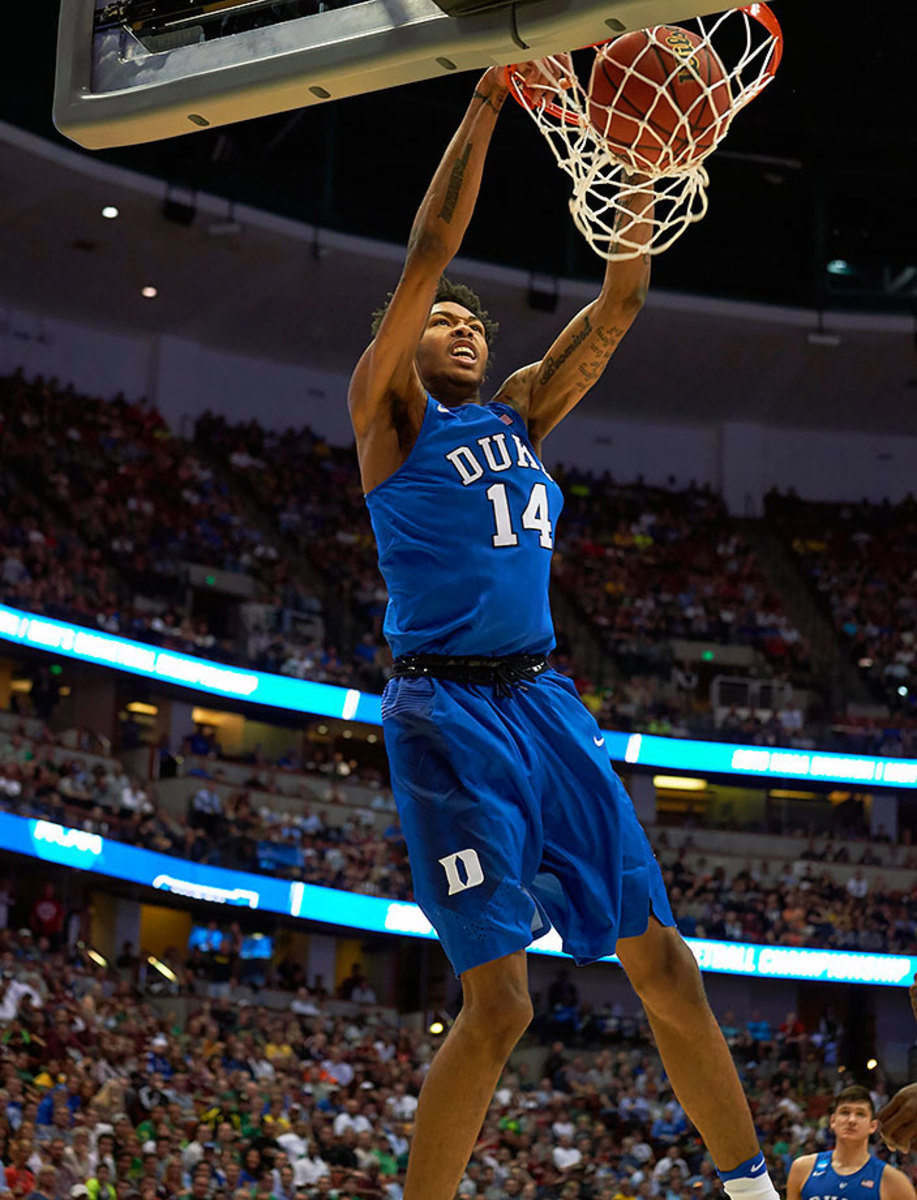
It sounds like the Sixers are almost-definitely going to draft Ben Simmons first. You can justify both players there, but I’m sticking with Ingram as the top overall prospect. He is not as physically prepared for the NBA, but Ingram’s combination of scoring instincts and shooting ability offer him a clear pathway to NBA success and lessen the risk involved in his development. In a draft where there are few “wow” prospects, Ingram offers the best combination of low risk and high reward.
#2: Ben Simmons, LSU — 6'10", 240 | Forward | Freshman
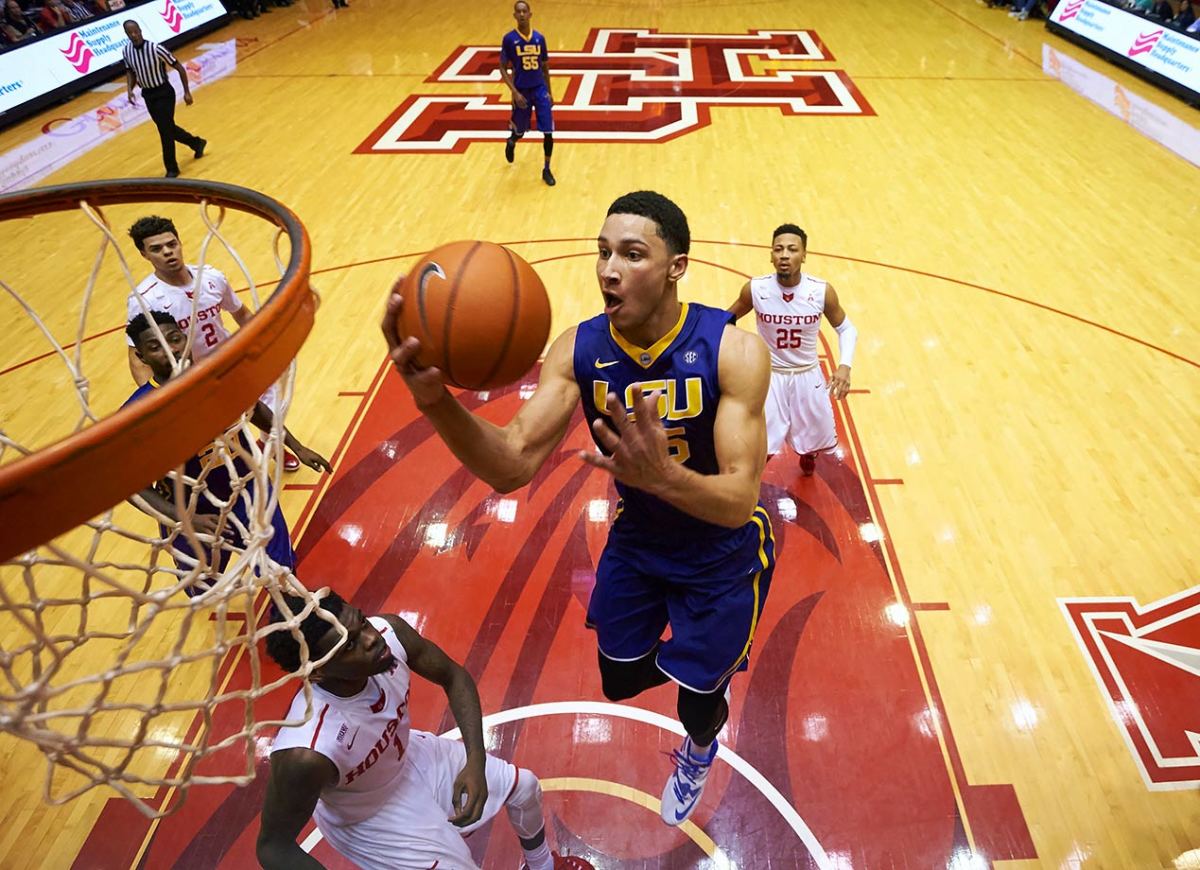
Simmons is one of the more unique talents to come along in decades, and all signs point to him being selected No. 1. He is not a scorer by trade, nor a highly instinctive or diversified one, but his innate passing ability at his size makes him special. Drafting him means committing to putting shooters around him and enabling him to do what he does best as a ballhandler. Building that roster also means investing time and assets, and enabling is a key word here for a kid whose approach to the game and handling of adversity has come into question. But if it all comes together right, he could be a spectacular player indeed.
#3: Dragen Bender, Maccabi Tel-Aviv — 7'0", 216 | Forward | 18 years old
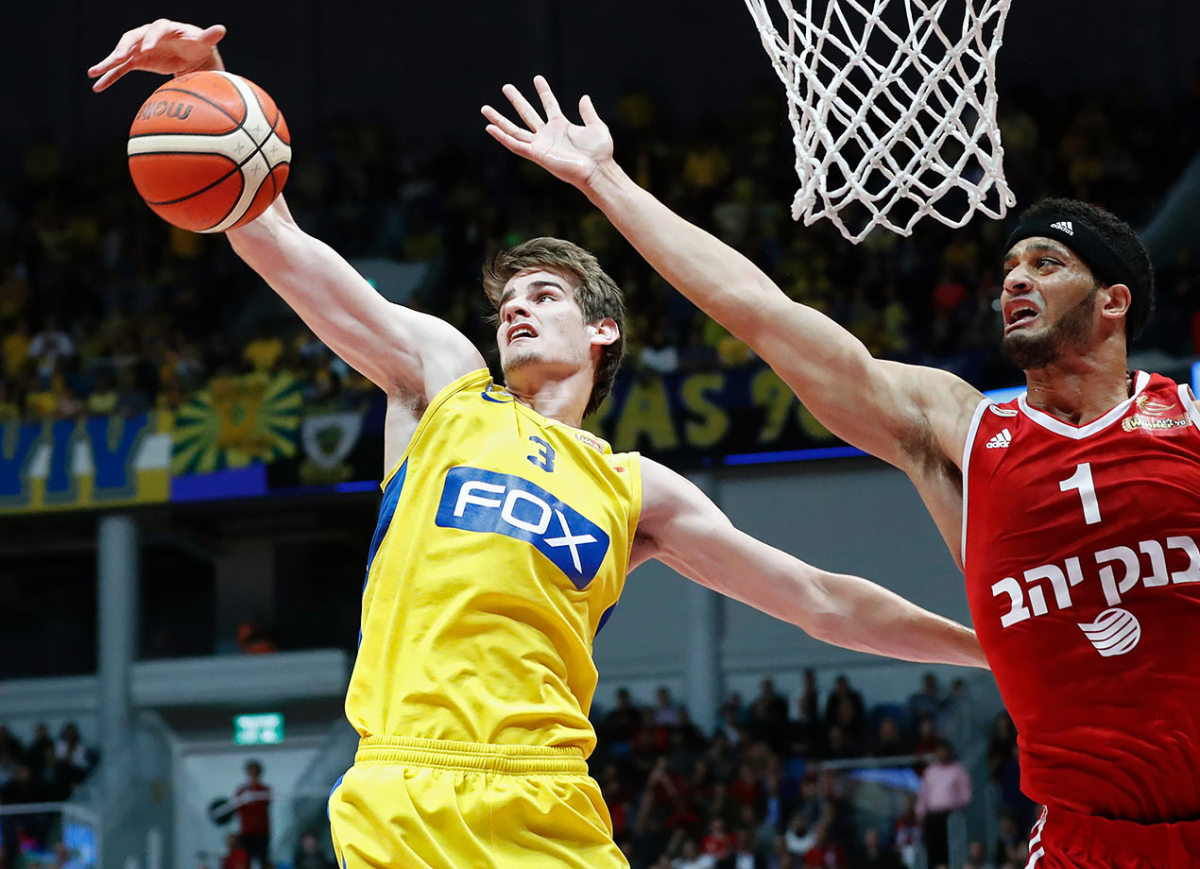
I loved the Toni Kukoc comparison that Luke Winn posed in SI’s recent feature on Bender. Bender’s not unlike Simmons in that sense as an oversized passer, although he doesn’t facilitate offense on the ball in the same fashion. With his playmaking, shooting potential and unselfishness at 7' 0", Bender has the talent to become a weird but fashionable offensive cog for a good team. As he grows into his body, his place on the floor defensively should become clearer. He’s the youngest player in the draft, too.
#4: Jamal Murray, Kentucky — 6,4", 205 | Guard | Freshman
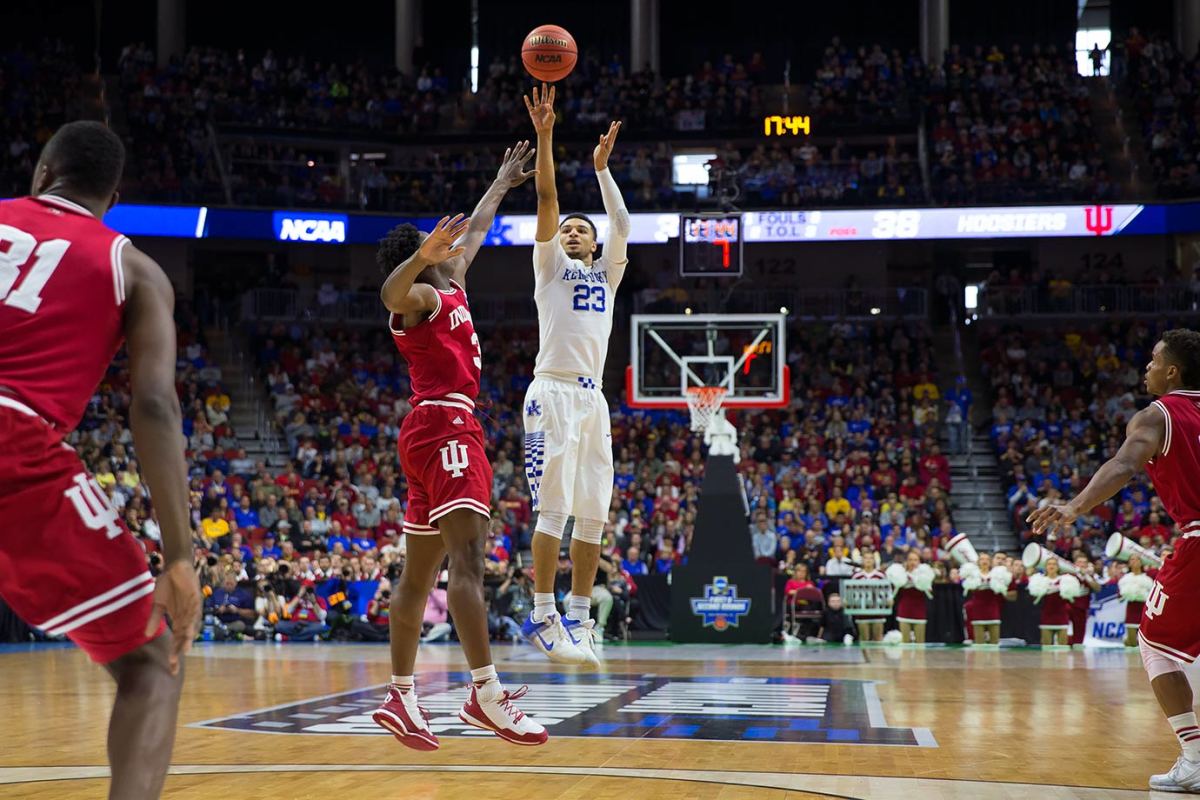
In a different draft class, Murray might go in the 10–15 range. He’s not the most athletic guard in the class, but he gets buckets and scouts love his confidence. His college production, shooting ability and the fact he won’t turn 20 until February give him plenty of value for teams seeking a long-term upside play. His craftiness and ability as a secondary playmaker should let him play a bit of both guard spots. He may slip a little on draft night given teams’ guard depth from picks 3–5, but not too much further.
#5: Kris Dunn, Providence — 6'4", 220 | Guard | Senior
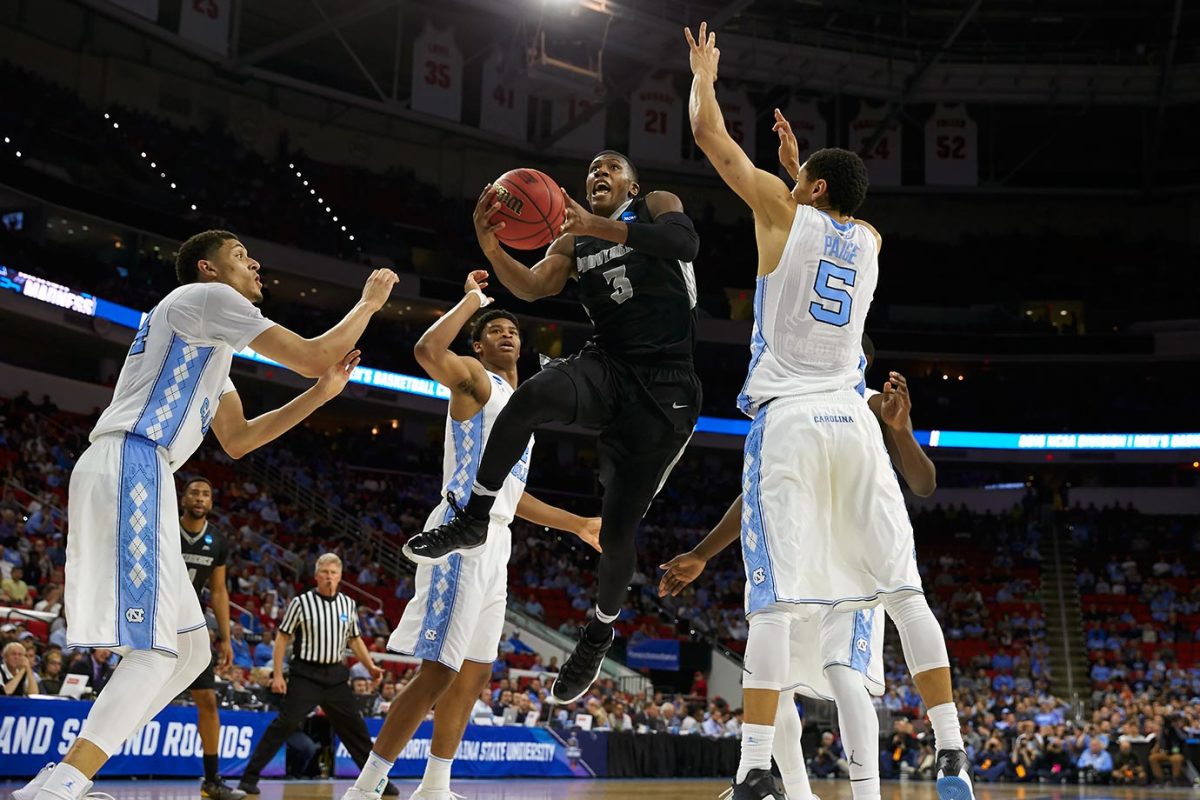
Rumors are heavily linking Dunn to the Timberwolves, and that makes a lot of sense, despite the presence of Ricky Rubio. He’s a Tom Thibodeau type. Dunn should be a plus defender who can run the offense and get to the rim. He’s a great athlete and is one of the most NBA-ready players in the draft. What exactly is Dunn’s ceiling will probably be tied to the development of his three-point shot. He’s the best point guard available, regardless.
#6: Henry Ellenson, Marquette — 6'10", 245 | Forward | Freshman
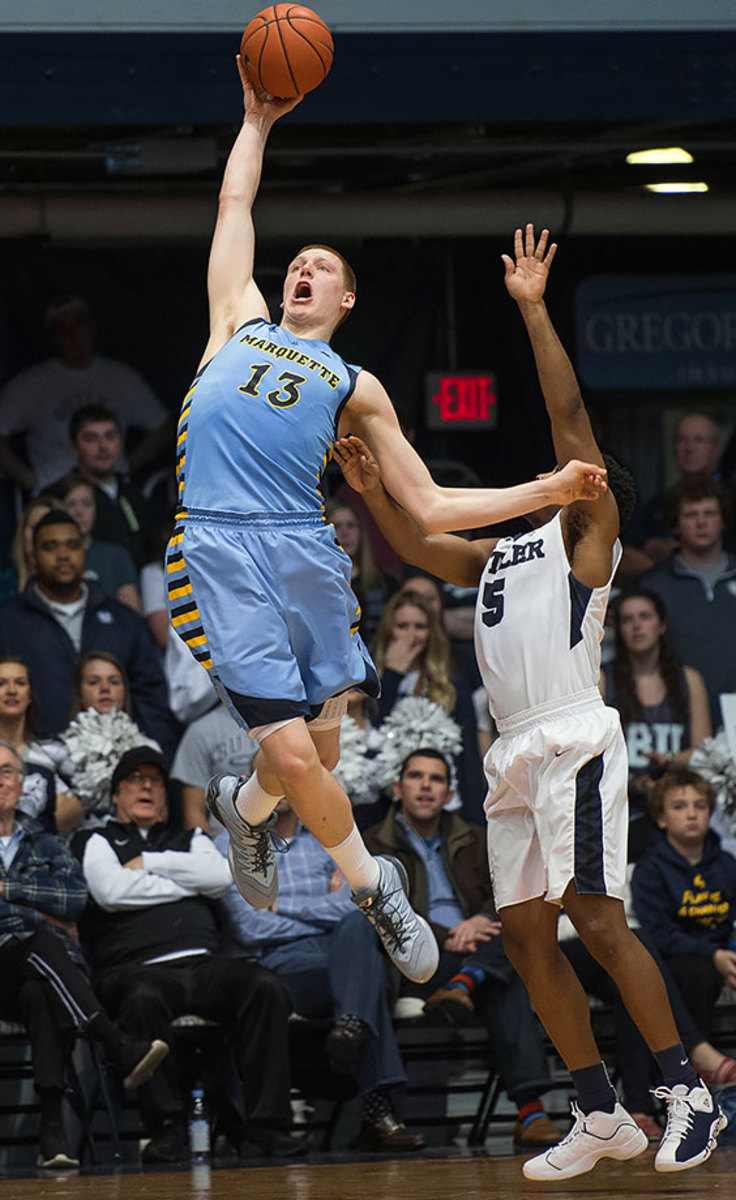
Ellenson has a very wide range of lottery outcomes, probably more than most in what’s already shaping up as an unpredictable first round. There’s no denying his talent offensively, distinguished by his mix of low-post scoring, jump shooting and ballhandling skills. The knock here is he’s not an explosive athlete nor a strong lateral defender, but if you’re playing him at center it could mitigate some of those concerns. True stretch five-men are hard to find.
#7: Buddy Hield, Oklahoma — 6'4", 215 | Guard | Senior
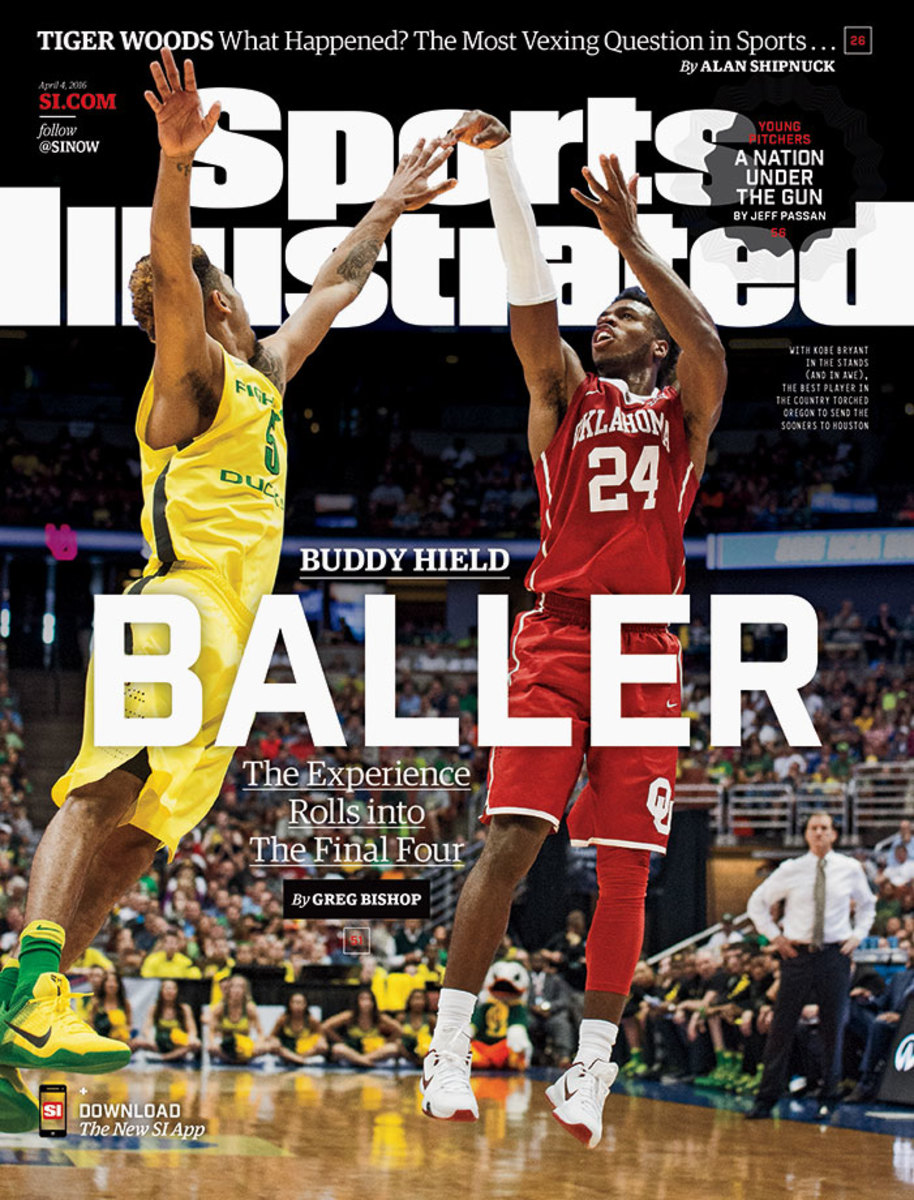
Hield apparently made 85 out of 100 threes in a recent Celtics workout and also told reporters he thinks he’s going to the Lakers. Neither of those two things matter much—we already knew he could shoot, and a leap into the top two would be stunning. Regardless, the elite three-point stroke and an otherwise regular skill-set gives the J.J. Redick comps credence. Though he’s 22 already, the development he showed over four college seasons actually plays in his favor with some scouts. Hield should be able to help you right away.
#8: Marquese Chriss, Washington — 6'10", 233 | Forward | Freshman
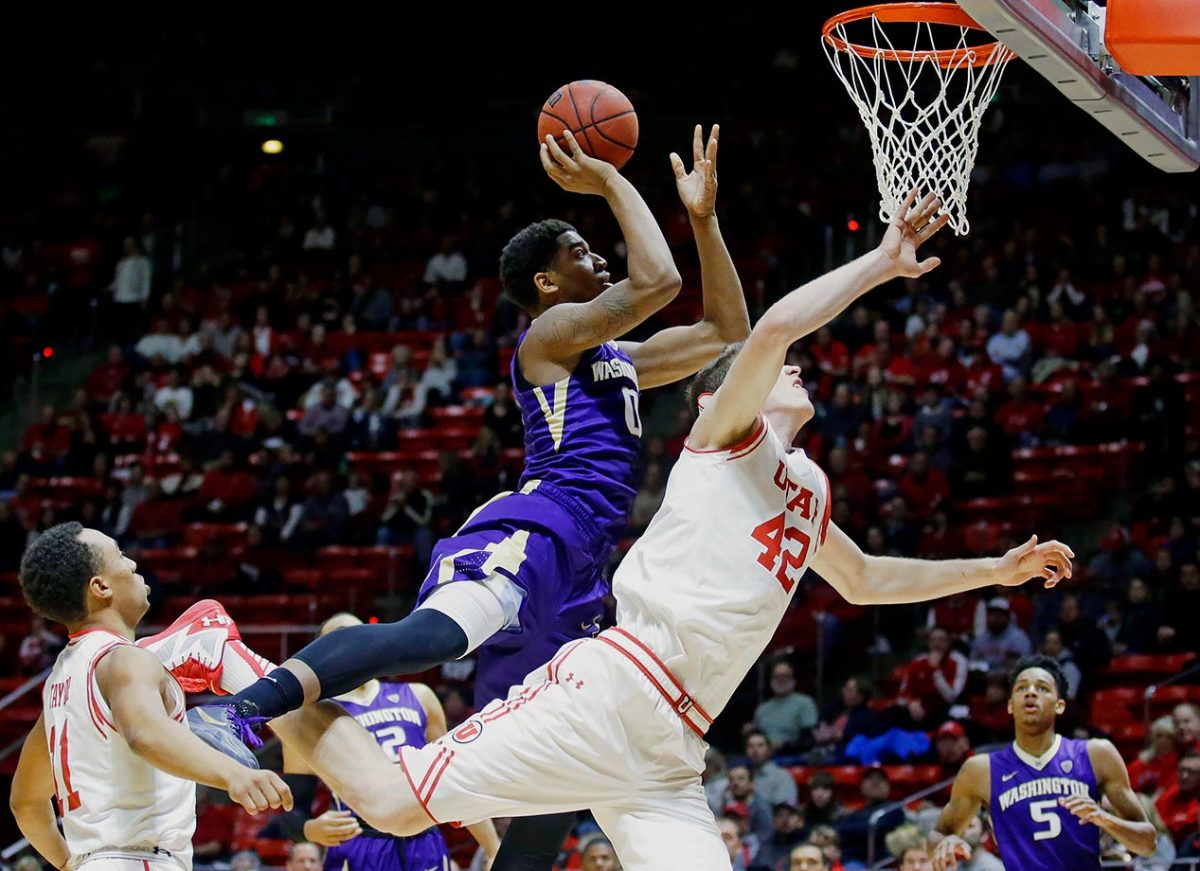
Some mocks have Chriss going in the top five based on his potential alone. That’s justifiable, but around here feels like more of his range. He’s got almost every tool you can ask for, but also hadn’t played much high-level basketball before coming on late at Washington. He almost definitely doesn’t know how good he can be. We’ve seen guys with similar profiles and better pedigrees float in and out of the league. As a stretchy, bouncy, scoring four-man, Chriss will be a sexy pick, but he’ll have a greater learning curve than most.
#9: Jakob Poeltl, Utah — 7,1", 240 | Forward/Center | Sophomore
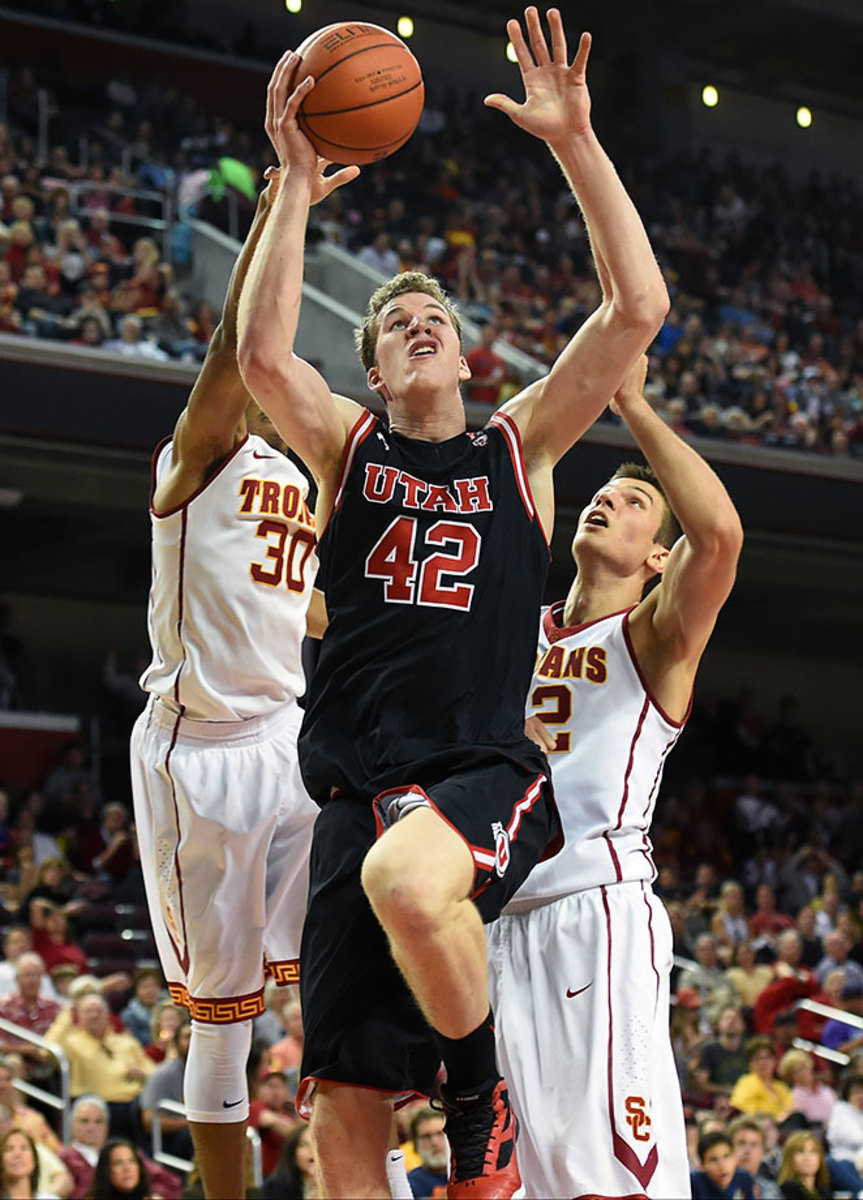
Poeltl’s a throwback big, and it’s almost working against him in the court of public opinion. Also working against him is the fact that not many teams in the top 10 really need a center. But look, he’s massive and has a well-developed post game, and there will be a place for those types of guys even as the league begins to skew small. He got noticeably better from freshman to sophomore year of college. Big men always take time. He’s a fairly safe pick in my book.
#10: Jaylen Brown, Cal — 6'7", 223 | Forward | Freshman
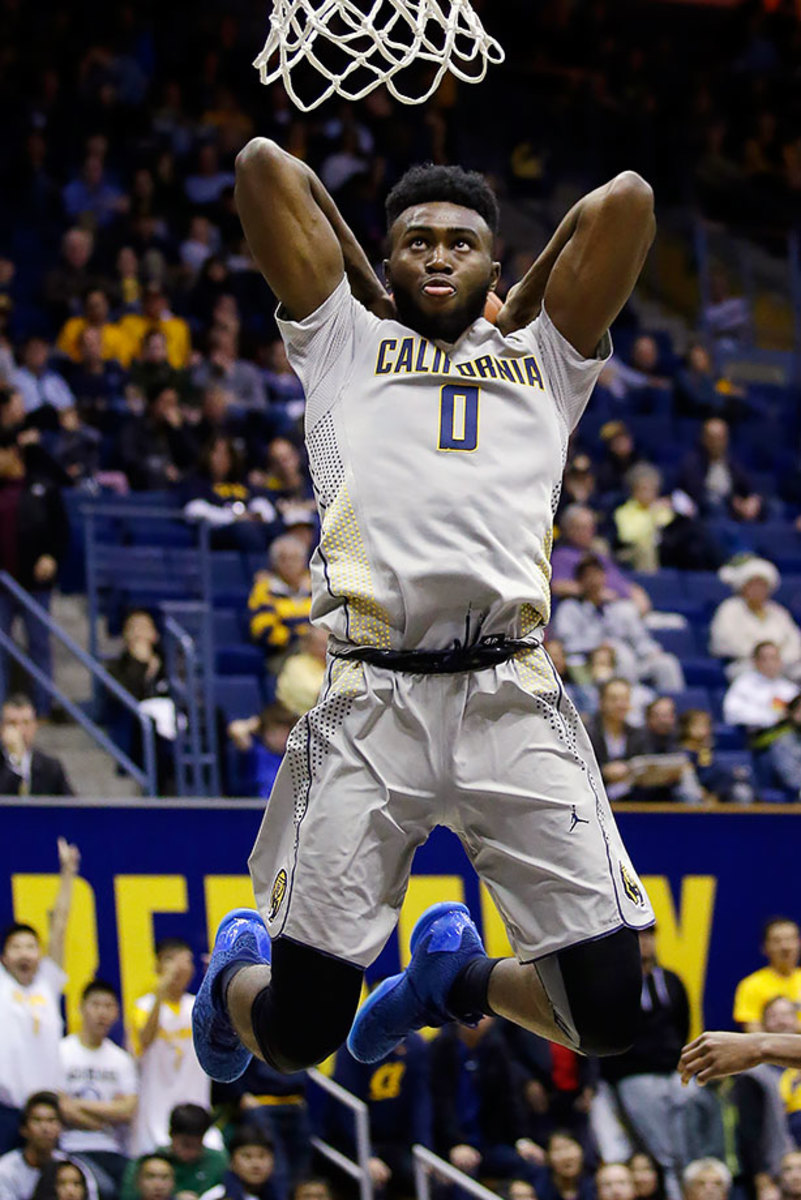
Something here just doesn’t quite move the needle like it should. Brown has every athletic tool in the book, but had a well-publicized rough go at Cal and probably lacks the basketball acumen to contribute early on. Big potential means he could conceivably go in the top five, but the opportunity cost could be high. He’s a smart kid, but can also overthink the game. One scout put it like this: “At least Gerald Green came in with a wet jump shot.”
#11: Timothe Luwawu, Serbia — 6'7", 205 | Guard/Forward | 20 years old
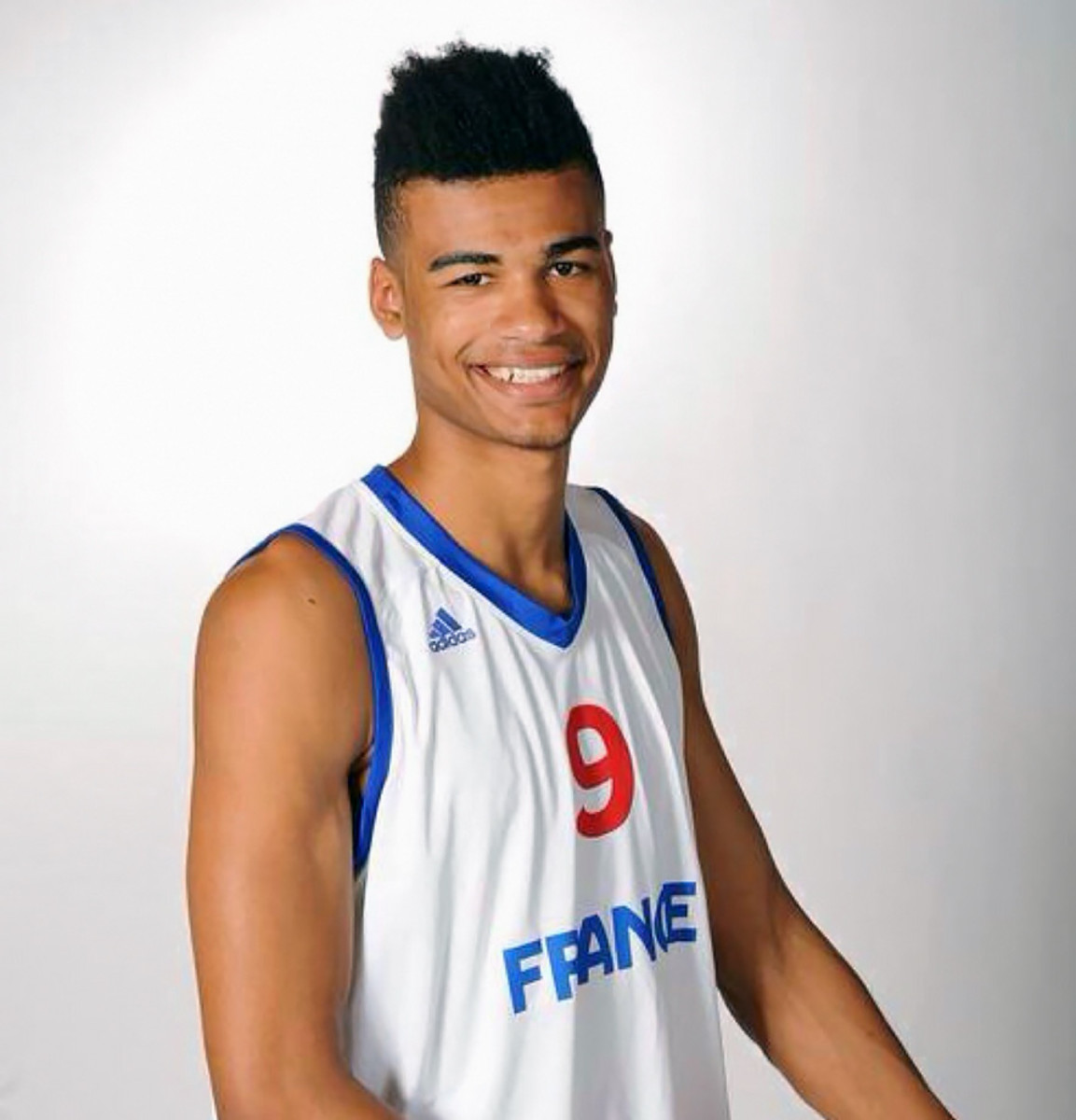
Two-way wings are always a valuable commodity, and Luwawu’s one of the best ones in a thin class. He’s a highlight-caliber athlete with a wingspan over 7’0” feet and shouldn’t slip too far from here. Scouts I spoke with felt he was closer to NBA-ready than most. Luwawu’s got a more diverse offensive game than just his dunk reel, and has made big strides in the past year. There’s a lot to like with him.
#12: Deyonta Davis, Michigan State — 6'10", 240 | Forward | Freshman
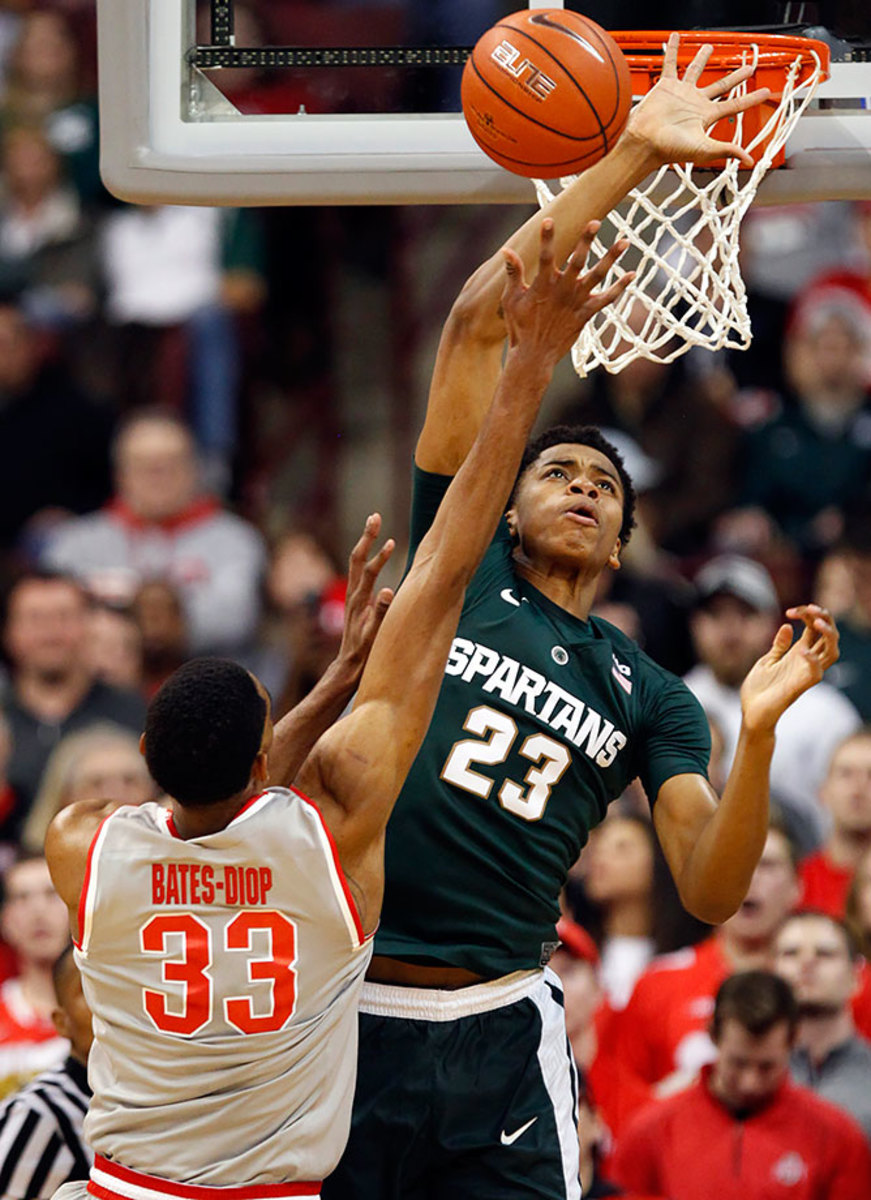
Everything is about projection with Davis. His length, quick feet and great shot-blocking instincts portend defensive success. With improving touch and a semblance of a jump shot, you can mold him on offense, too. He played a good bit for Tom Izzo, which matters, but there’s not much of a sample size or history of production to bank on. He’s a long way away from ready, but then again, there are a lot of guys in that same boat this year.
#13: Domantas Sabonis, Gonzaga — 6'10", 240 | Forward | Sophomore
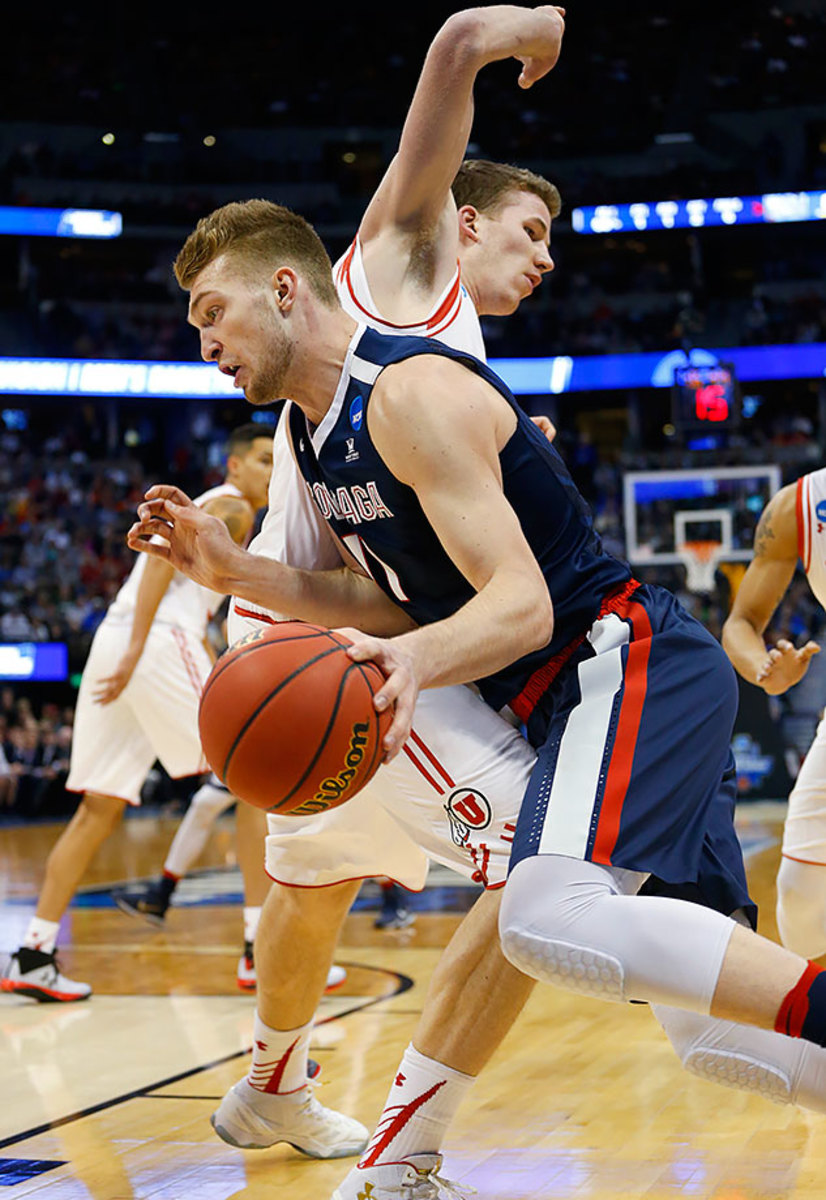
Sabonis plays exactly how you’d think the son of a Hall of Fame European big man would. Great fundamentals, soft hands, high motor and IQ. His Gonzaga production backs things up well. The issue is his lack of explosion and length, which raises questions about exactly what translates at the next level. Mid-first round and onward, Sabonis offers some safe value. There’s speculation he has a promise from a team in the late lottery.
#14: Furkan Korkmaz, Anadolu Edes — 6'7", 175 | Guard | 18 years old
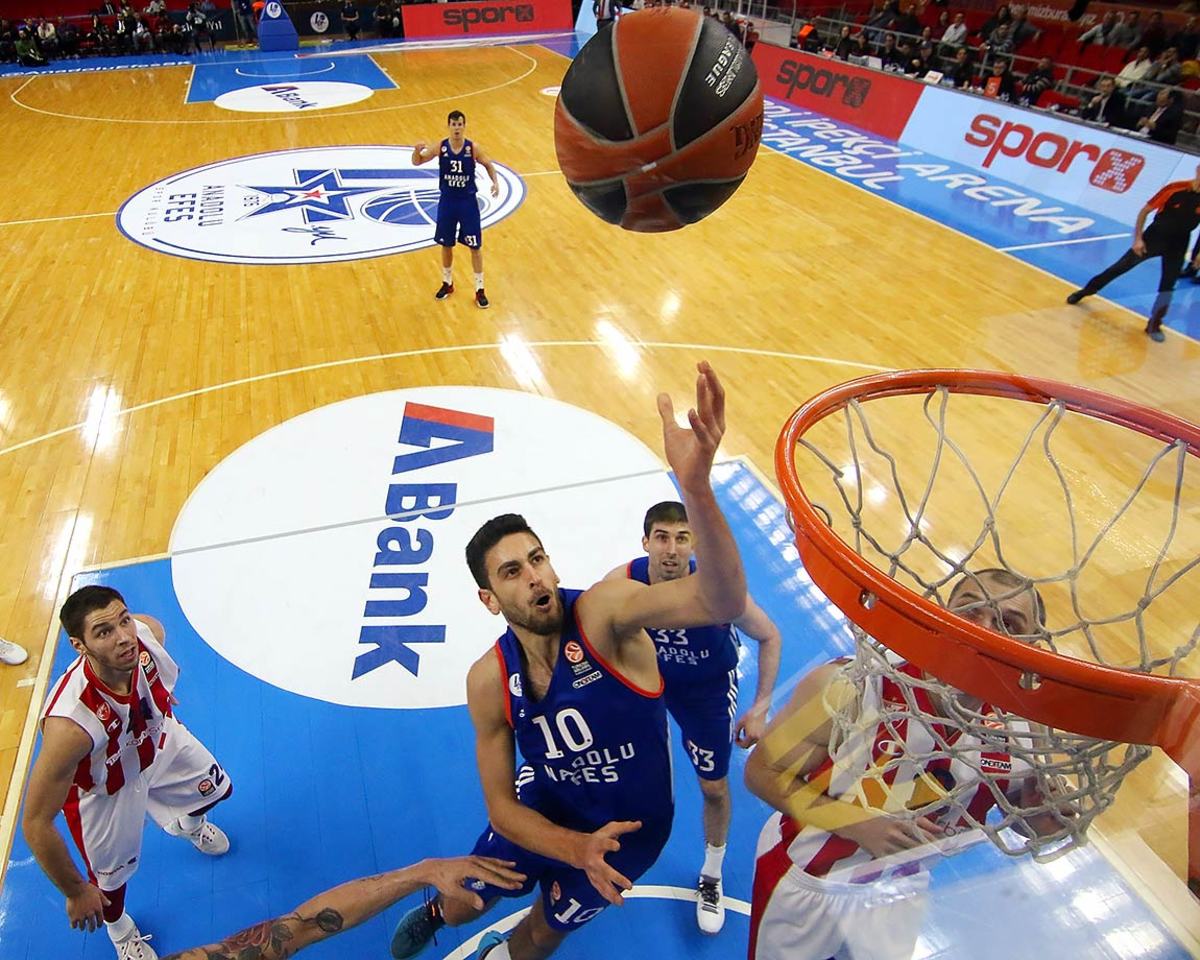
The combination of athleticism, shooting and youth make Korkmaz a very interesting stash candidate. He’s starred for Turkey at youth levels and shown flashes while playing with Efes’s senior team, but it’s worth noting how relatively small his sample size is against elite competition. He’s a long-term investment, not an immediate-impact selection.
#15: Skal Labissiere, Kentucky — 6'11", 216 | Center | Freshman
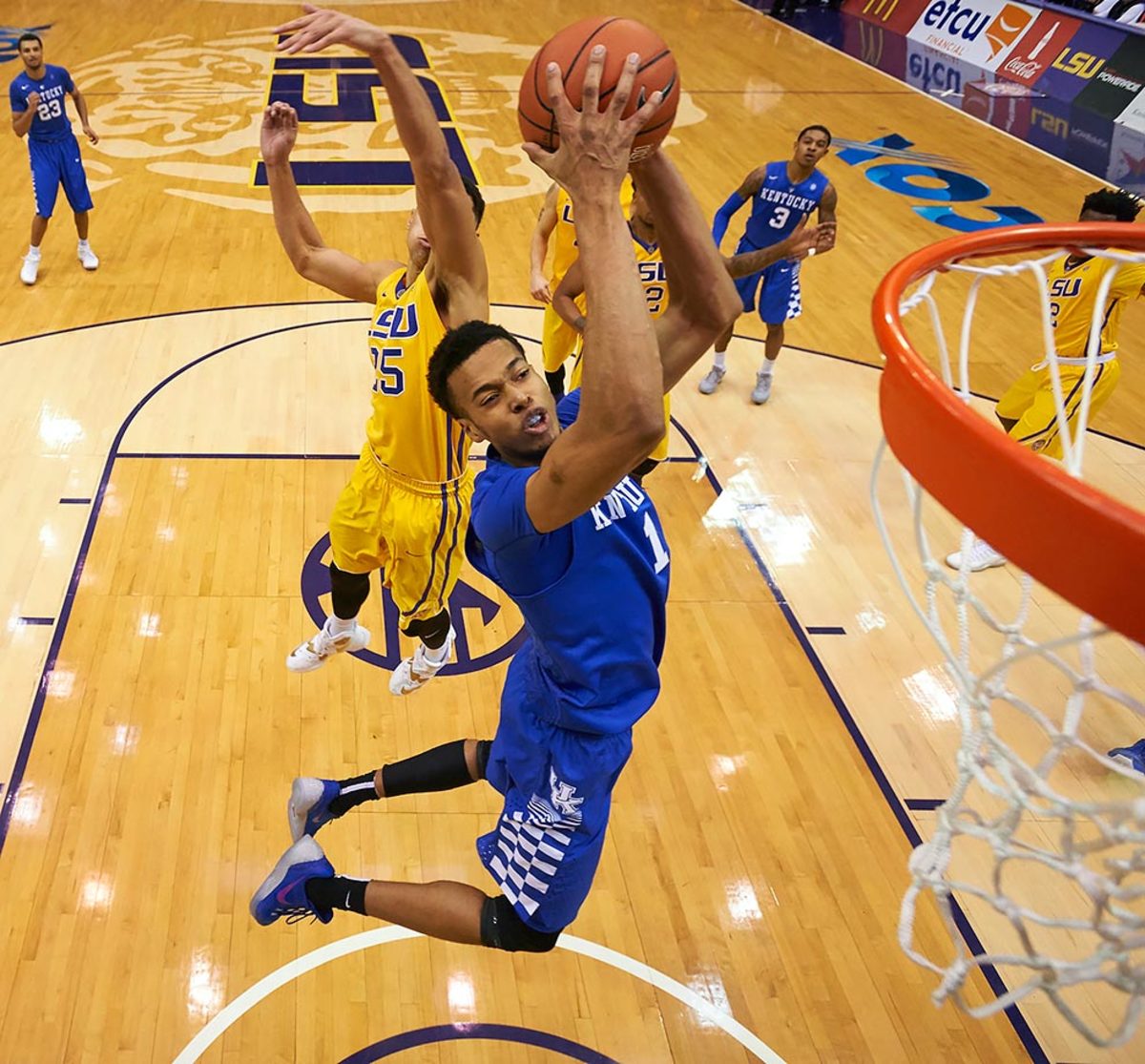
I have a hunch Labissiere slides toward the late teens on draft night. There’s just too much riding on projection with an older prospect who’s behind developmentally and with little history of consistent production. He’s big and might be able to shoot it and block shots, but he’s already 20 and has filling out left to do. Labissiere missed his junior season of high school with a back injury that has left lingering questions for teams. He could be a worthwhile gamble for teams with the time and resources to develop him. But, as one scout put it: “It’s really hard to play in the NBA not knowing how to play basketball.”
#16: Denzel Valentine, Michigan State — 6'6", 210 | Guard | Senior
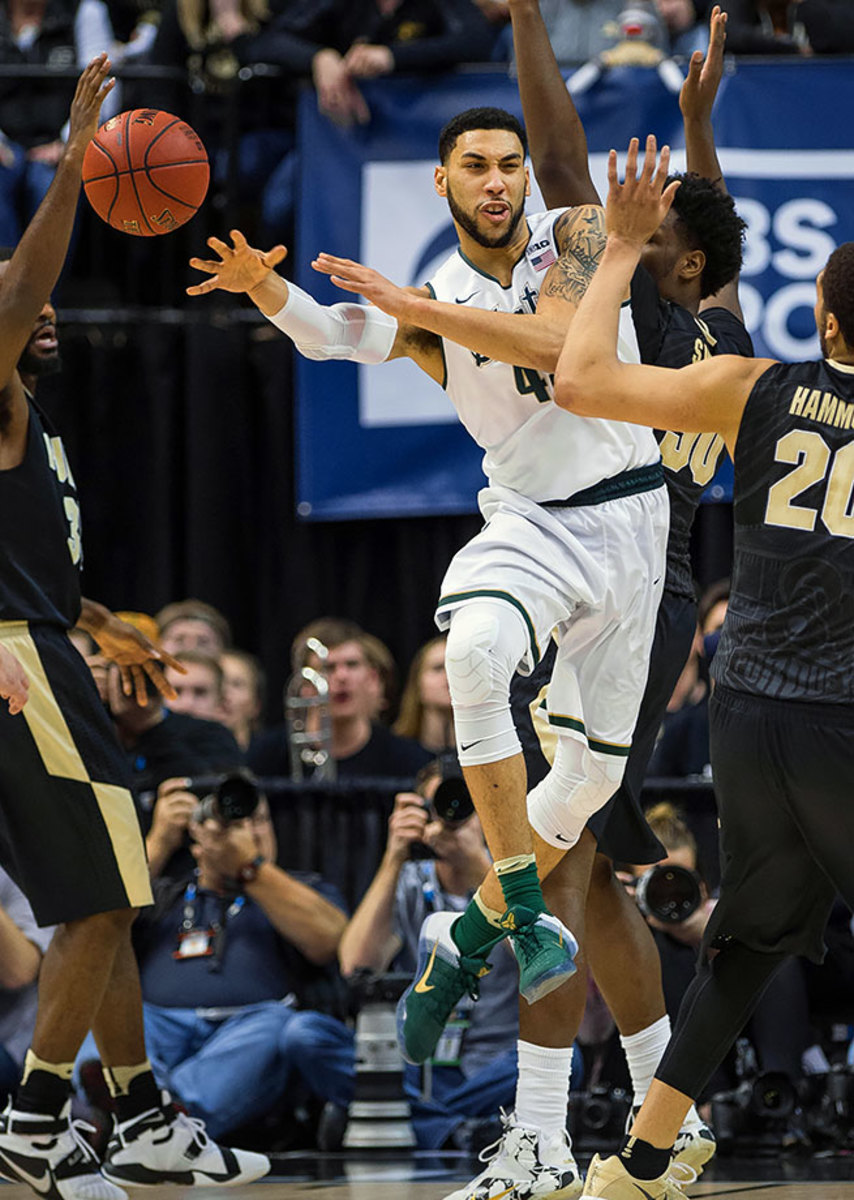
Valentine’s production (19.2 points, 7.5 rebounds, 7.8 assists) was outstanding last season, and his feel and playmaking help balance the lack of eye-popping athletic measurables. He won’t play the same ball-dominant role as a pro, but you’re buying him as a secondary ballhandler who can space the floor and hoping he catches up defensively. Teams have concerns about the condition of his right knee, which could cause him to slip a bit on draft night.
#17: Demetrius Jackson, Notre Dame — 6'1", 220 | Guard | Junior
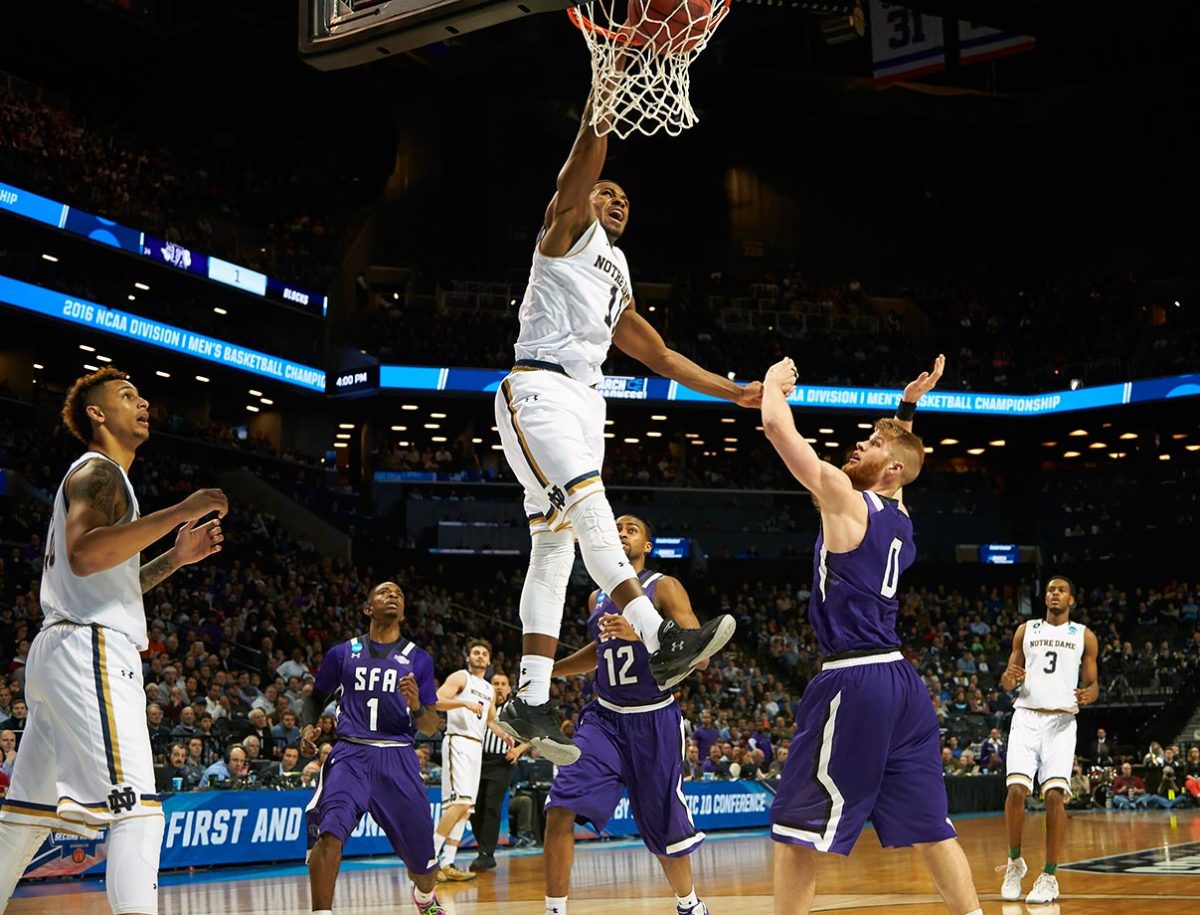
Jackson is tough and extremely athletic and has a good chance to be the second point guard drafted. He’s coming off a strong year at Notre Dame, but his shooting percentages dipped as he shouldered more of the scoring load. Skill-wise, he’s somewhat a master of none. His actual production will have to catch up to his tools. Scouts wonder if he’s cut out to be more than a reserve long-term, but he has decent value in this range.
#18: Wade Baldwin IV, Vanderbilt — 6'3", 195 | Guard | Sophomore
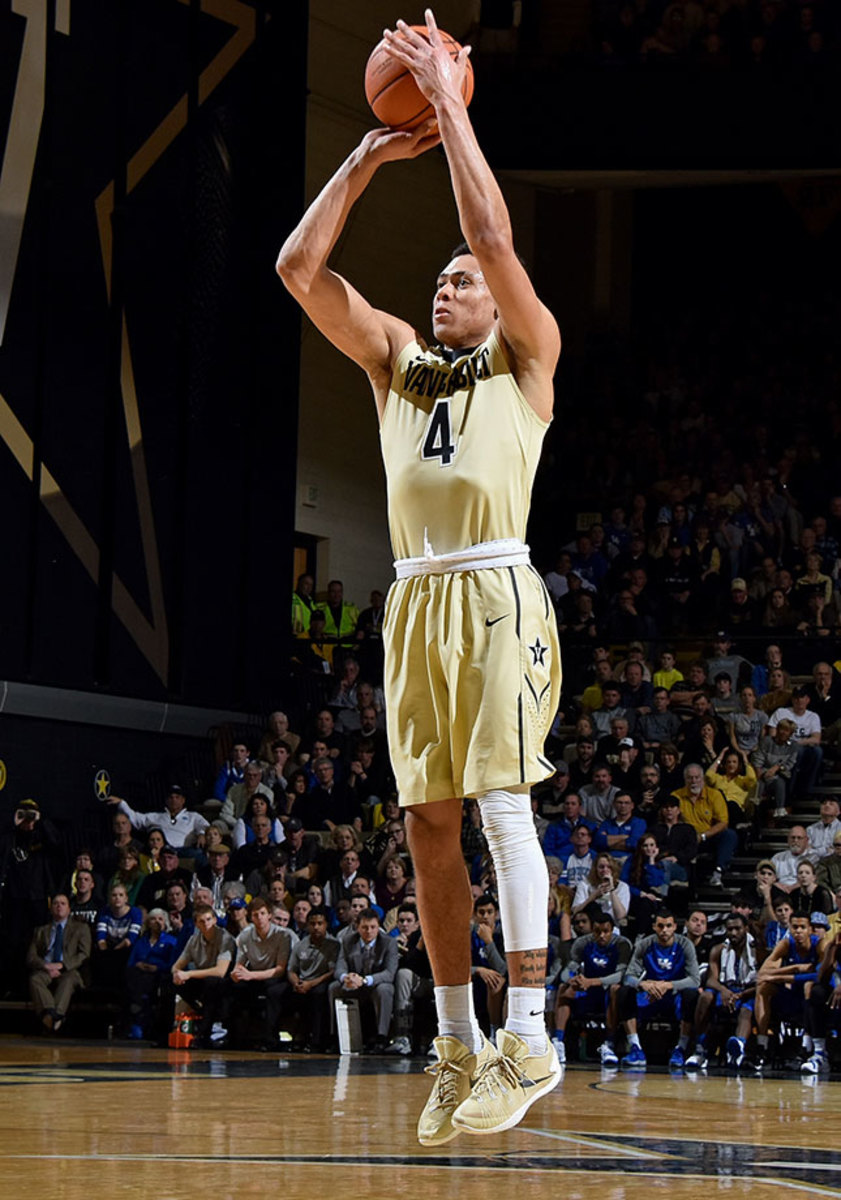
Baldwin’s combine measurements—6' 4" with a 6' 11" wingspan—certainly validated his case as a defensive stopper with a chance to be more. His offense hasn’t sold some scouts, and he’s not a natural point guard in the purest sense, but he can hit a shot and could perhaps be better suited for a lower-usage role. Multiple scouts have cited his tendency to overthink and get in his own way. Still, his defensive potential gives him a relatively high floor.
#19: Ante Zizic, Cibona Zagreb — 6'11", 240 | Center | 22 years old
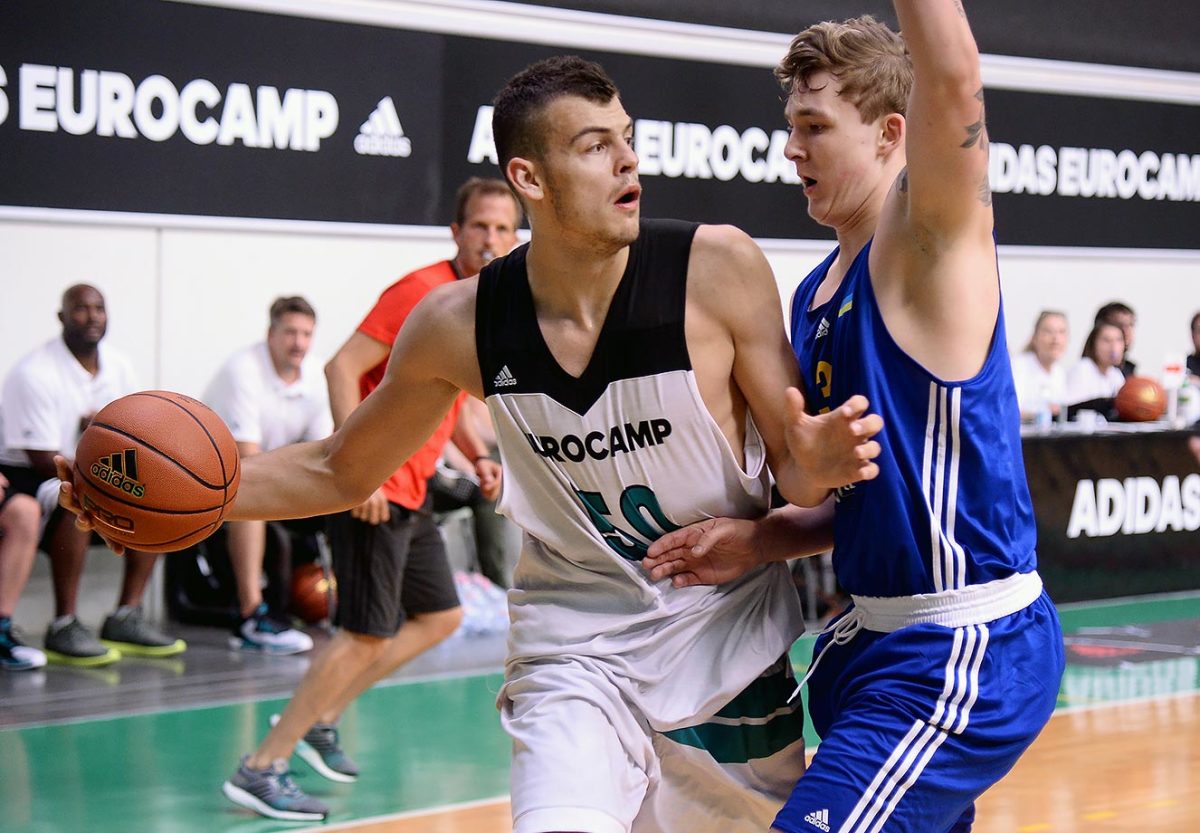
Near the top of the list among stash candidates is Zizic, a garbage-man type who knows his role, works hard on the glass and is physically mature enough to accomodate his preferred style. Impressive production as a teenager in the Adriatic League (13 points, eight rebounds per game) definitely stands out. Zizic’s skills have a ways to go, but it’s easy to see him as a nice complementary piece on the inside.
#20: Dejounte Murray, Washington — 6'5", 170 | Guard | Freshman
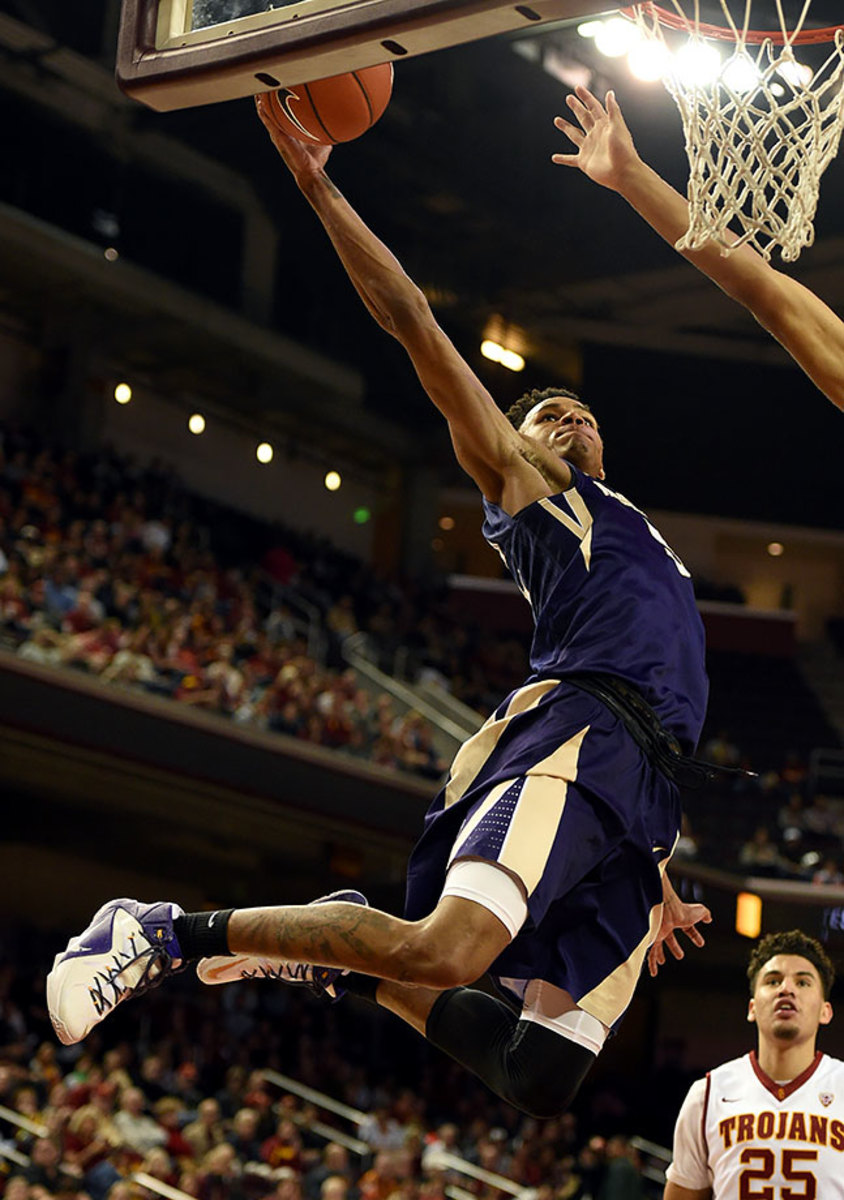
One optimistic scout calls Murray, simply, “a baller.” “He does some things you can’t teach,” another says. This is the crux of his intrigue, and while he’s going to need some time, he’s a definite upside play as a scoring combo guard. His shot is a work in progress. On talent and projection you can justify him in the late lottery, but his range appears pretty wide.
#21: Taurean Prince, Baylor — 6'7", 220 | Forward | Senior
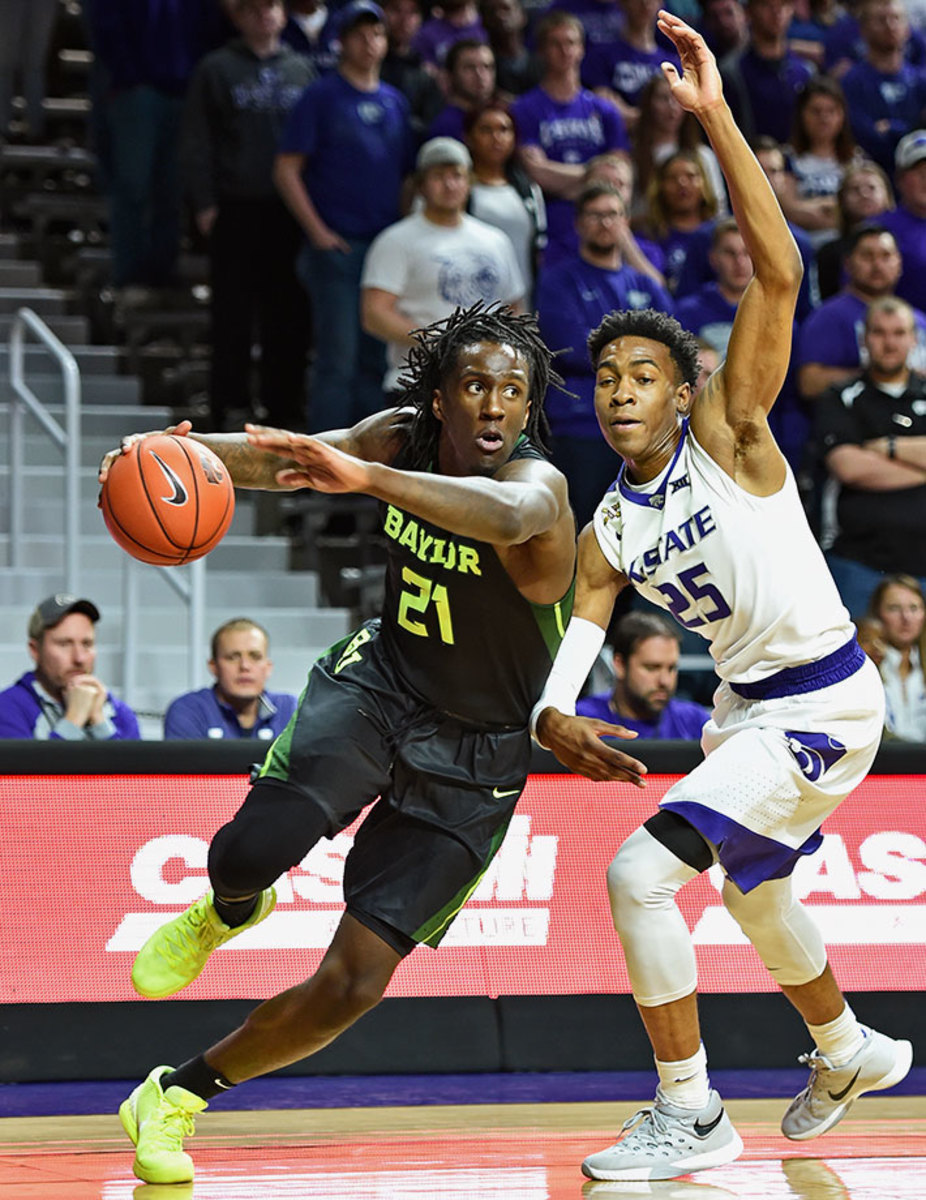
Prince did a little bit of everything for Baylor, with a game one scout described as “unconventional.” He’s long and strong and should be able to cut it athletically, and while he struggled some as a senior when tasked with making plays on the ball, odds are he won’t be asked to do as much of that in the NBA. Although he lacks an elite skill to hang his hat on, he should be able to step into a rotation pretty quickly.
#22: Tyler Ulis, Kentucky — 5'9", 160 | Guard | Sophomore
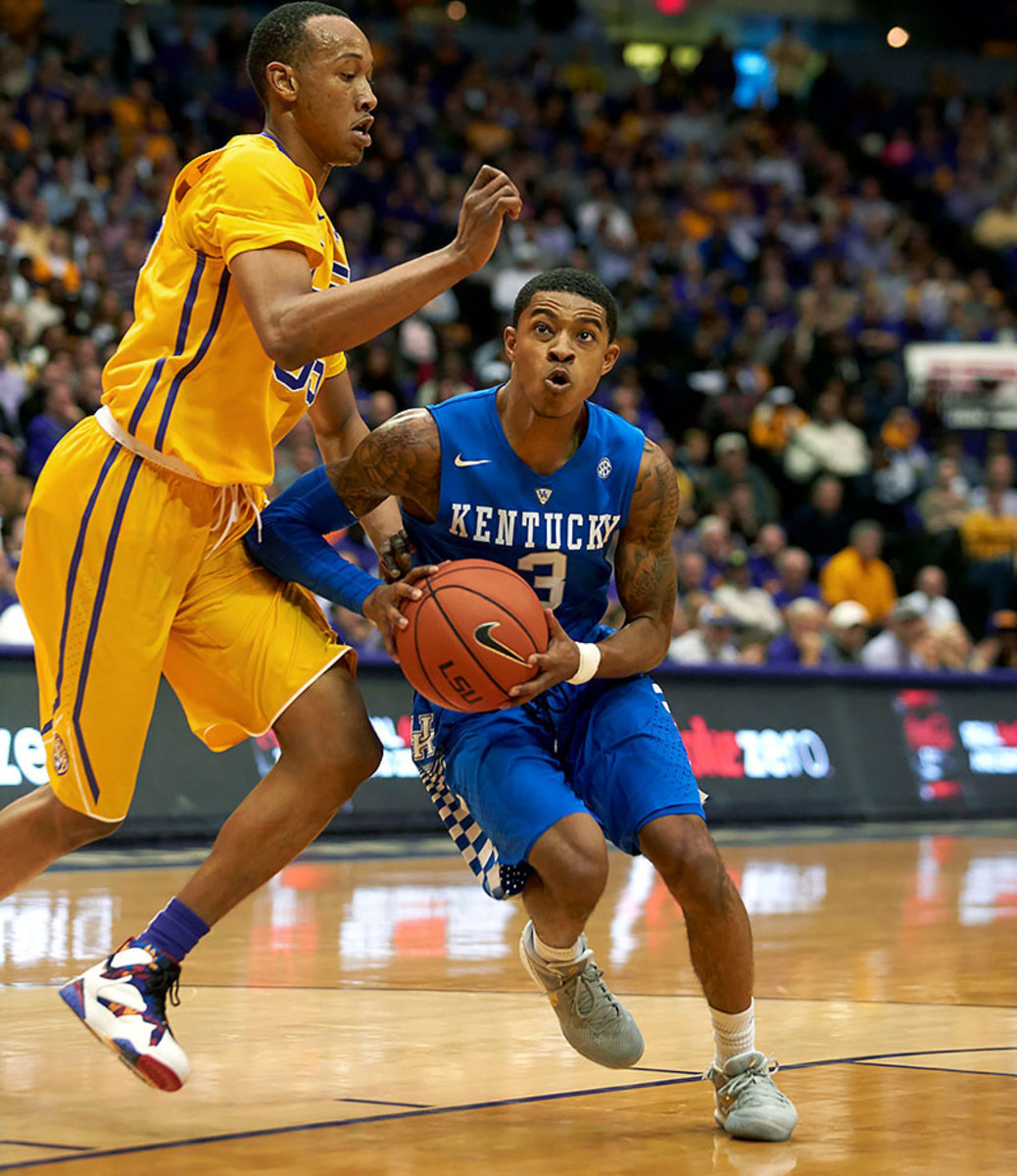
Ulis has solidified himself as a mid- to late-first rounder, and he’s probably the most instinctive passer among available guards. He won’t make many mistakes, and he’ll make everyone around him better. “Three inches taller,” one scout says, “and he would be the best point guard in this draft.” Medical concerns about his hip and his extremely thin frame gives some reason for pause.
#23: Cheick Diallo, Kansas — 6'9", 220 | Forward | Freshman
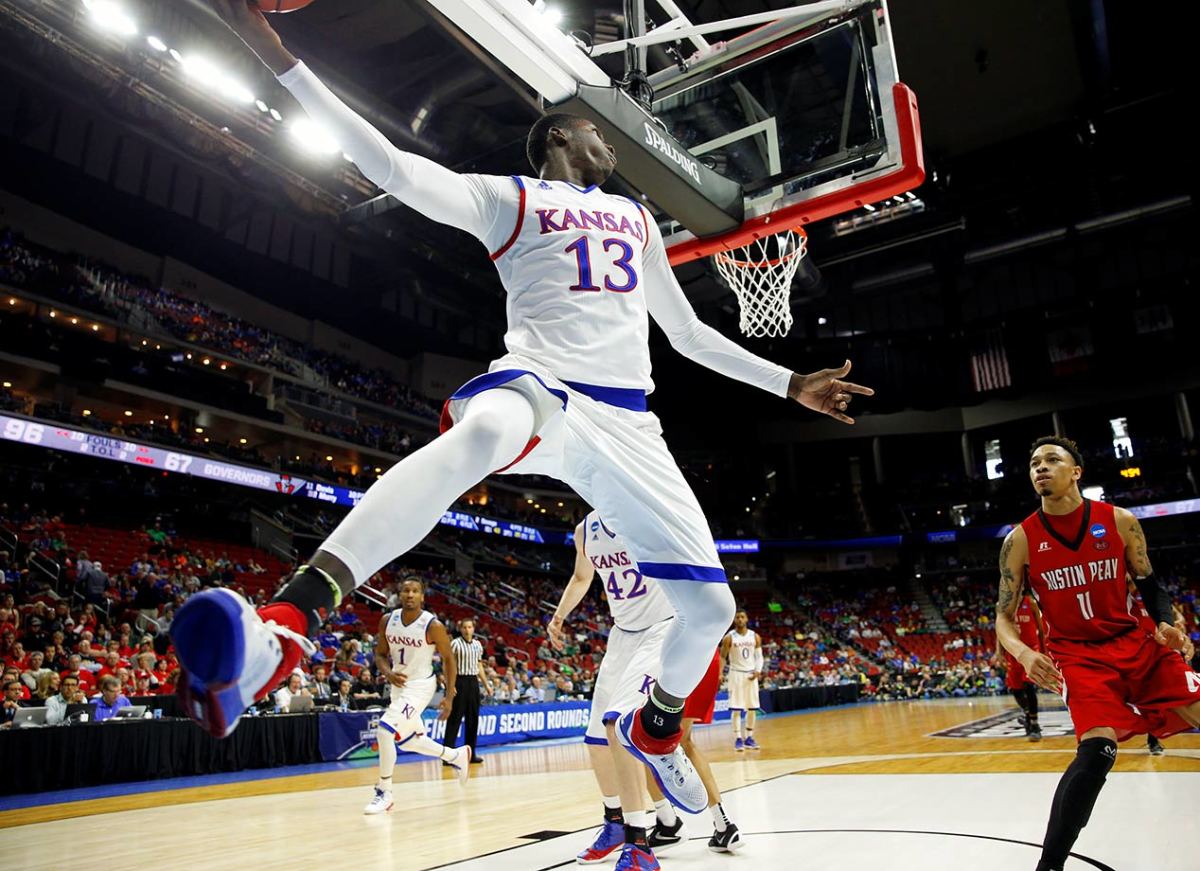
Diallo is bouncy, aggressive and has a reputation for playing extremely hard. With added seasoning, he should become a useful energy big.His considerable length helps compensate for his lack of height. He’s not a scorer beyond the dunks and hustle bucket, which limits his upside. Diallo was buried in the Kansas rotation, but will be granted more patience from here.
#24: DeAndre Bembry, St. Joseph — 6'6", 207 | Forward | Junior
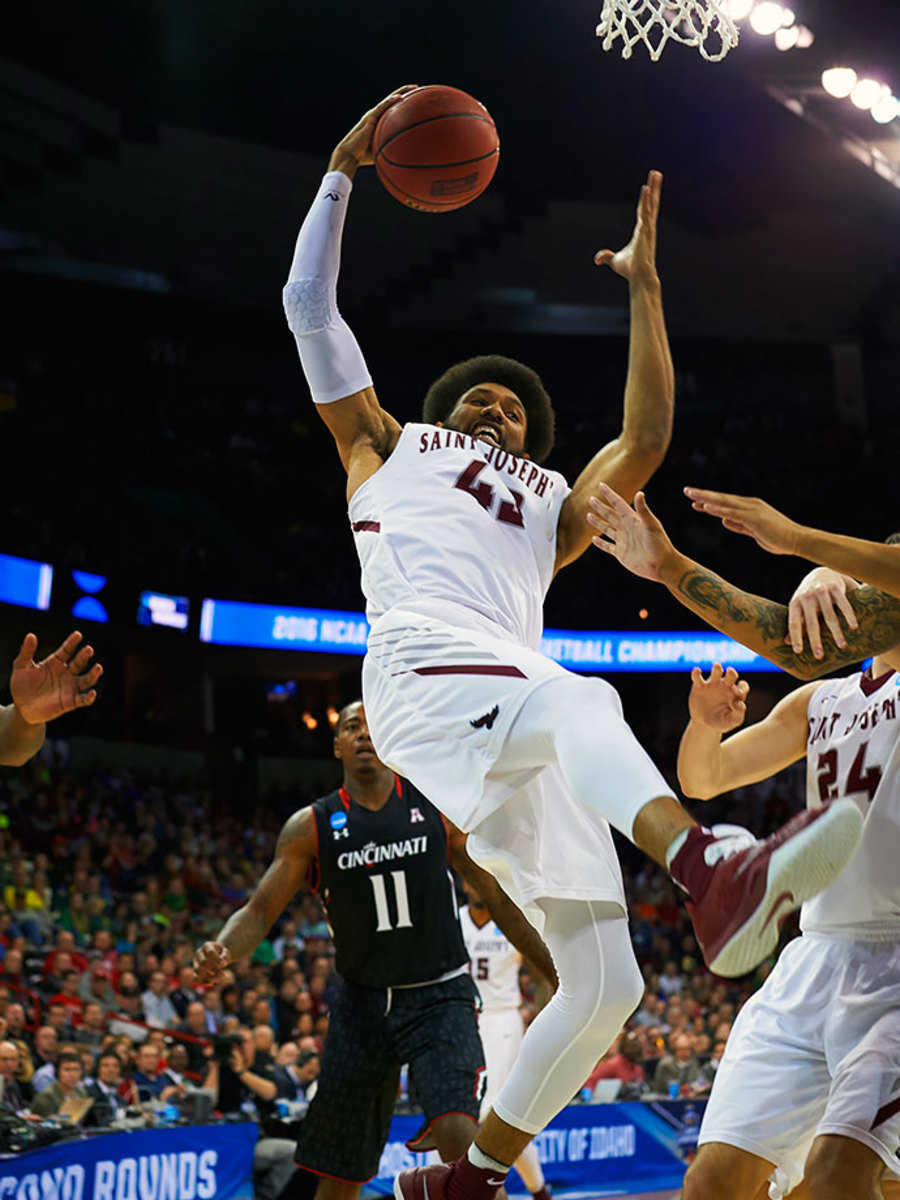
Bembry’s one of those players who just gets it. He’s got a mature game and the college production to back it up. He’s low-risk in that you can see him meshing into any offense with his playmaking and versatility. The major question is his three-point shot, but it’s not broken and if you play him alongside shooters it should alleviate some of those spacing concerns. Bembry could make an impact early in his career and help a playoff team next season.
#25: Ivica Zubac, Spain — 6'9", 265 | Forward | 19 years old
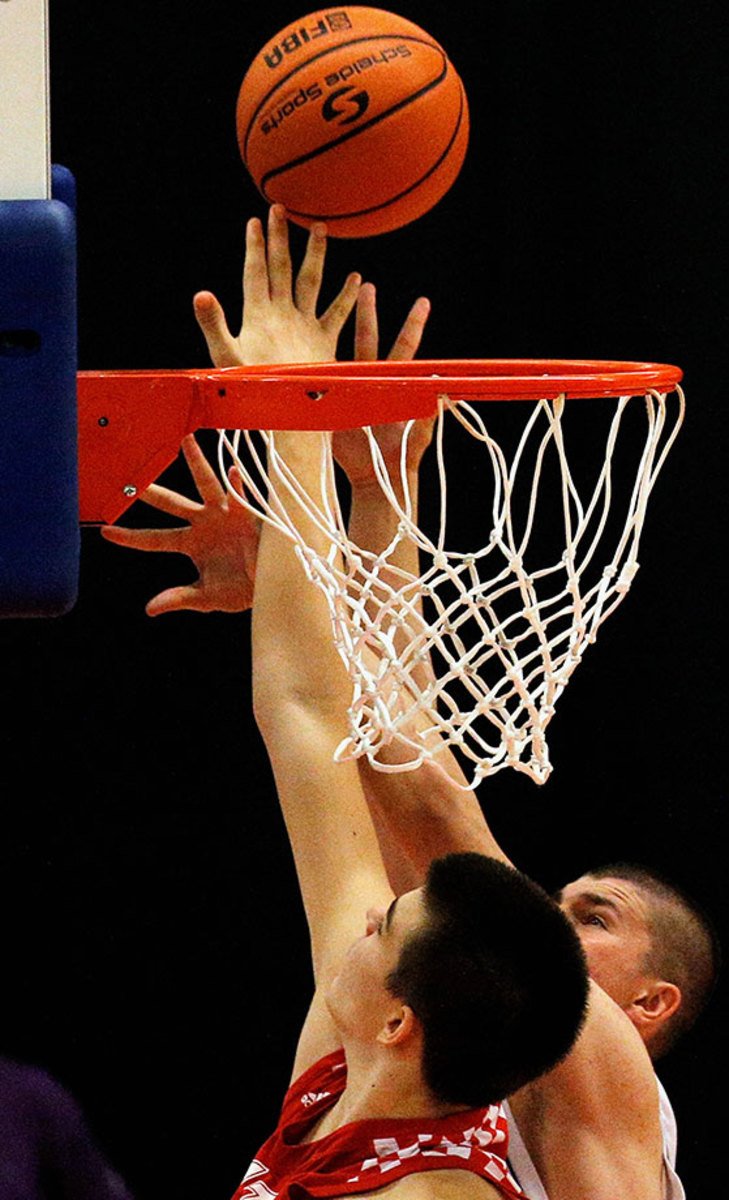
Zubac turned heads with insane production at the 2015 FIBA U19 Worlds (33.7 PER, 17.6 points, 7.9 rebounds). He’s a strong finisher with a great frame and nice post-up game. Zubac has potential to cut it defensively and should be a fit at the next level as a screen-setter and rim-runner. He apparently prefers to come over to the NBA next season, but can justify a place on someone’s bench given his tools and possibilities. If you can stash him, even better.
#26: Thon Maker, Orangeville Prep — 7'0", 219 | Center | 19 years old
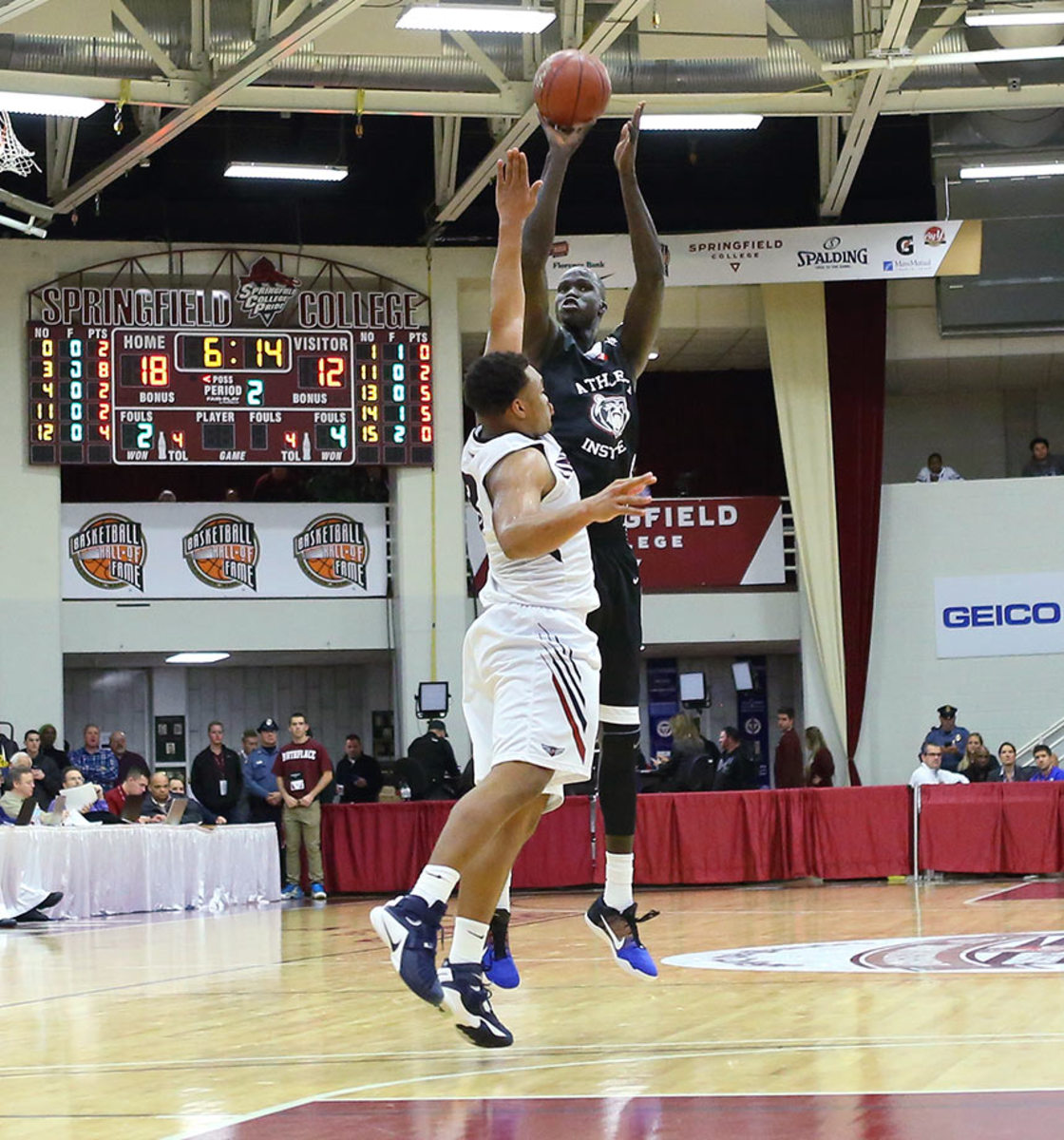
Opinions remain mixed on Maker, but it seems scouts are beginning to come around a bit. He’s a legit 7-footer, long and mobile, but, of course, rail-thin. People like his intangibles, yet there are still a ton of ifs when figuring out which of his strengths actually translate to the league. He might be an athletic energy big who can step out and make a shot, he also may never be able to bang inside. Maker has been working out against Brandon Ingram leading up to the draft and apparently held his own. There’s a wide range of outcomes here.
#27: Juan Hernangomez, Spain — 6'9", 225 | Forward | 20 years old
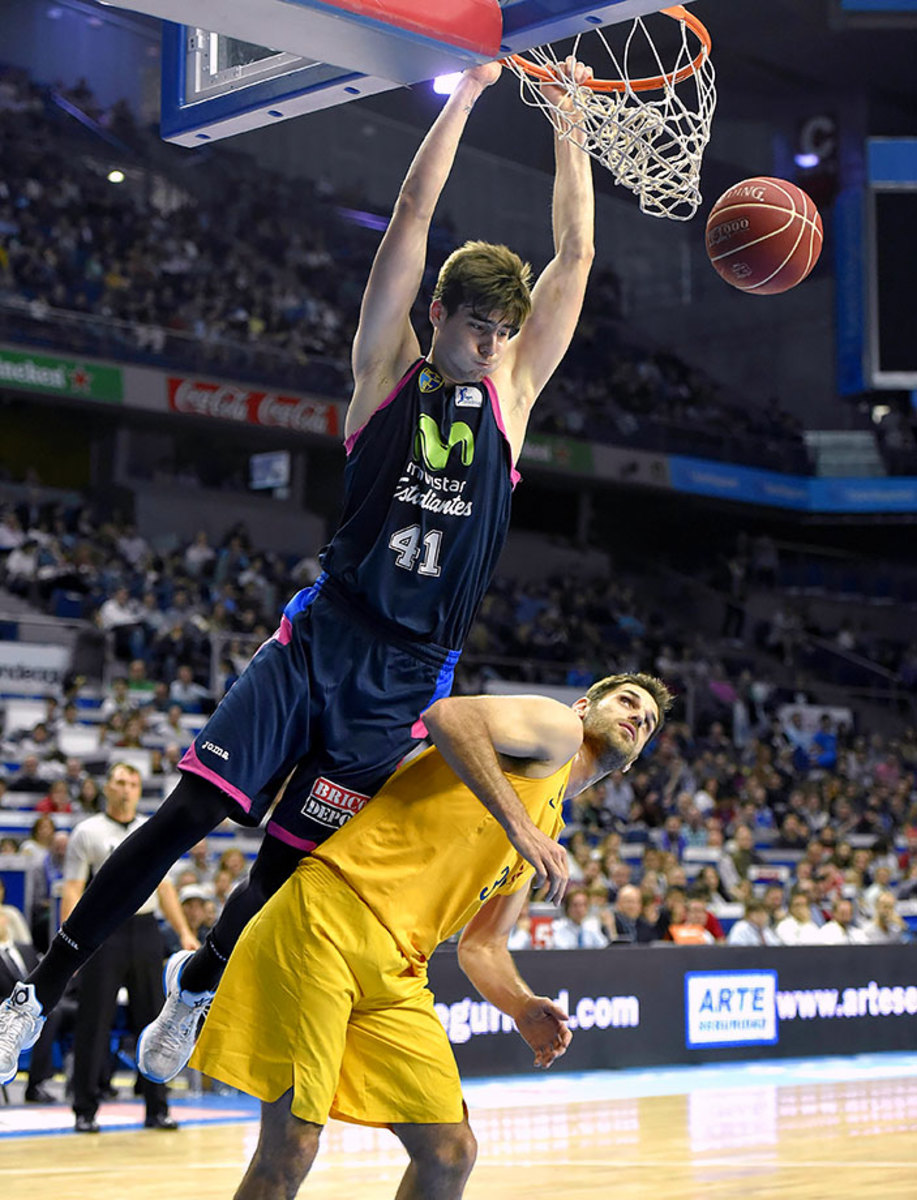
Hernangomez enjoyed a strong season in Spain and won’t turn 21 until September. A skilled stretch-four who could eventually play some three, he’s comfortable getting his offense spotting up and finishing inside. One scout cited Hernangomez’s high energy level and deceptive leaping ability. It helps he’s already playing legit minutes and producing in a very tough league. Think late first round.
#28: A.J. Hammons, Purdue — 7'0", 281 | Center | Senior
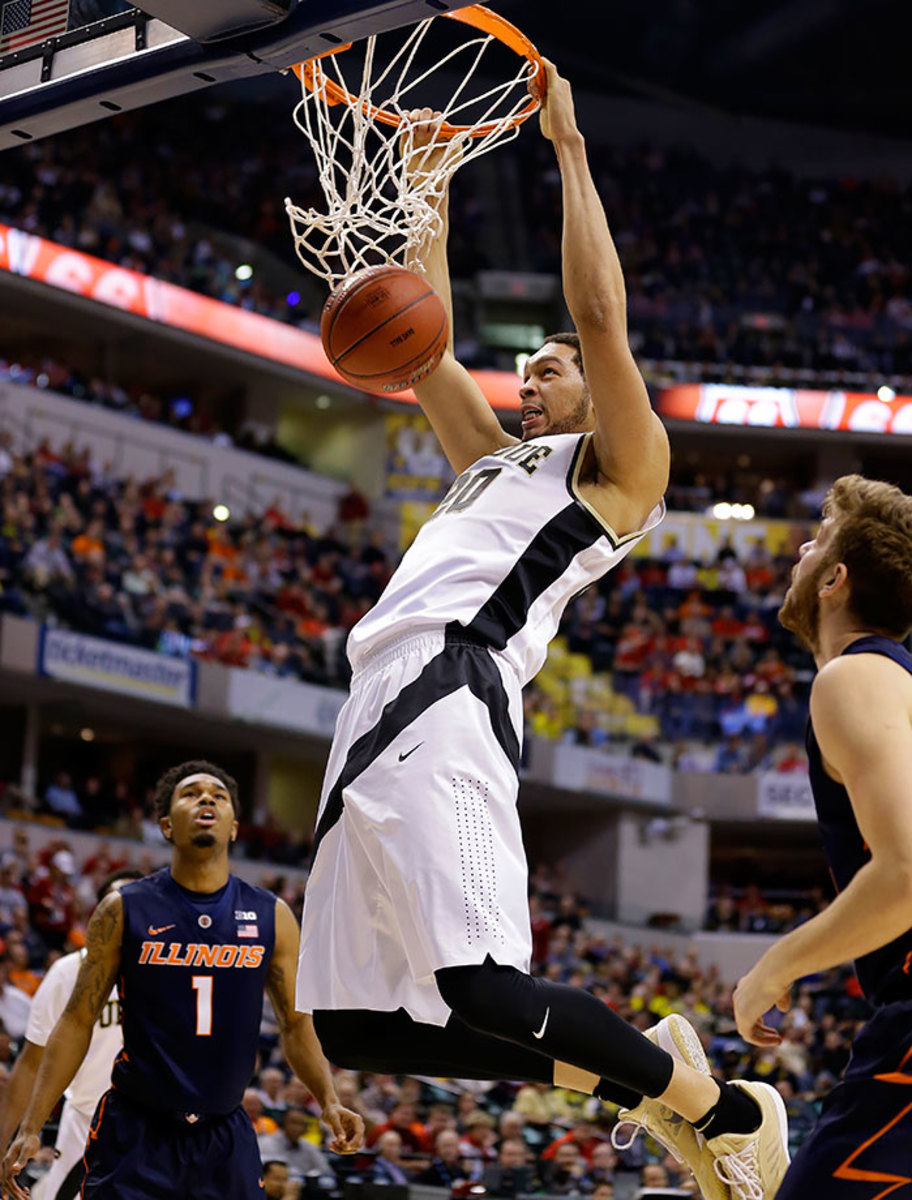
There’s no reason Hammons shouldn’t be a useful rim protector from day one. He’ll turn 24 soon, which will keep him out of the upper reaches of the draft, but he’s an NBA-level talent with an improving offensive skill level and pro-ready body. The question with him has always been his motor, and teams are fully aware of some off-court discipline issues at Purdue. There are a lot of ifs, but Hammons could surprise if the lightbulb starts to go off.
#29: Malik Beasley, Florida State — 6'5", 190 | Guard | Freshman
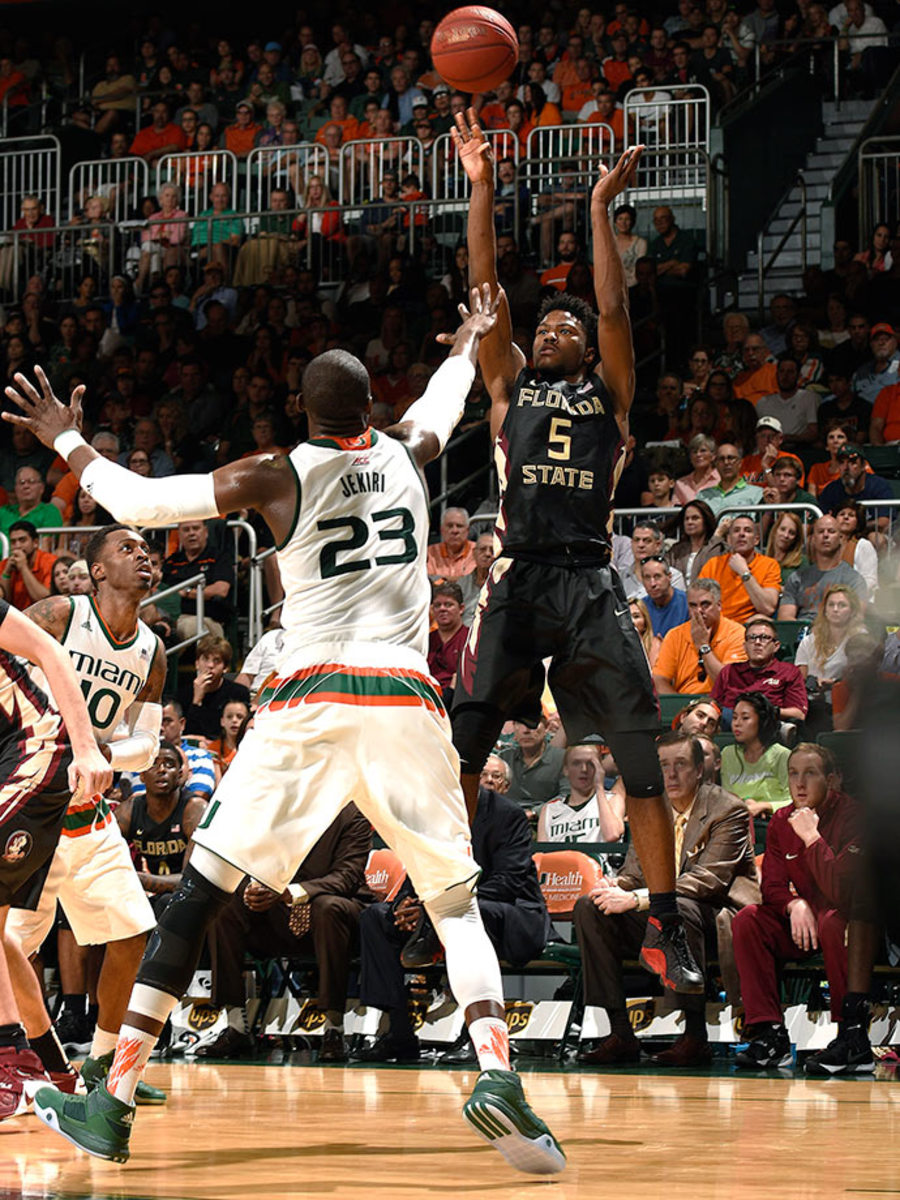
An athletic slasher with a nose for the basket, Beasley demonstrated the ability to score at all three levels in his one season at FSU, and improved as the year went on. He can shoot it, has a great frame and brings notably strong intangibles in terms of makeup and competitiveness. He has a metal rod in his leg after a stress fracture injury that will concern teams.
#30: Stephen Zimmerman, UNLV — 7'0", 240 | Center | Freshman
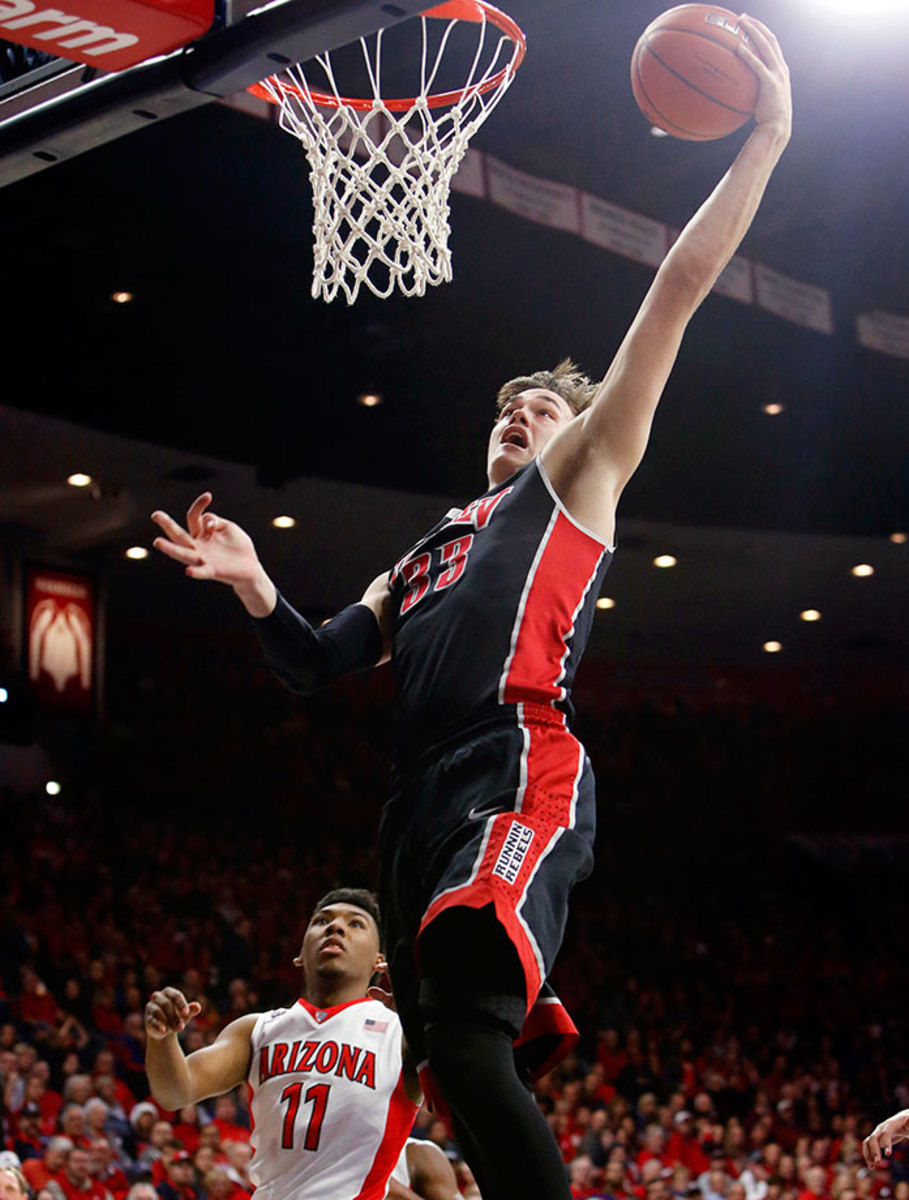
Zimmerman has great size and mobility, and a pretty nice shooting touch. He’s not a guy who really loves to bang inside and has a tendency to float away from the basket too much. He’ll need to bulk up to play center and to defend his position. He’s a dart throw, but taking a chance on a stretch big with some upside isn’t the worst thing in this range.
Cleveland Cavaliers
Team needs: Perimeter defense, backup point guard, combo forward
Picks: None
2015–16 results: 57–25, won NBA title
The Cavs just won the whole damn thing and don’t have any picks, but given their luxury tax situation, it wouldn’t hurt them to move into the second round and get another piece, if they can do so cheaply. Matthew Dellavedova will A) be a restricted free agent and B) was kind of MIA in the Finals, so unless they want a full season of Mo Williams, shoring up the backcourt will help. Cleveland can improve its odds of a return by improving its perimeter defense and finding someone to replace the surprisingly valuable Richard Jefferson.
Dallas Mavericks
Team needs: Perimeter defense, perimeter scoring, rim protection
Picks: 46
2015–16 results: 42–40, lost in first round
Perennial limbo has been a curse for Dallas ever since that improbable 2011 title. A lot of that stems from the fact that the Mavs have insisted upon staying relevant around a superstar who just turned 38, even if that guy is Dirk Nowitzki. A lot of their key vets will be free agents—Zaza Pachulia, Raymond Felton, Deron Williams and presumably Chandler Parsons.
With pick 46, the Mavs can really go with the best prospect available. Justin Anderson and Dwight Powell look like solid role players, but that’s not going to be enough. Stashing a player overseas or in the D-League could make sense, given there may not be a rotation-ready piece that deep in the second round. If the Mavs find a way to fight for a playoffs spot again, then fixing up the defense and finding someone who can get his own shot are keys.
Denver Nuggets
Team needs: Shooting, shot-blocking, long-term upside
Picks: 7, 15, 19, 53, 56
2015–16 results: 33–49, missed playoffs
It was a strange sort of fun watching the youthful Nuggets last season. Emmanuel Mudiay has serious talent and Nikola Jokic broke out. That said, they’re still an odd collection of parts, and they’ll get Danilo Gallinari and Wilson Chandler back from injuries. That duo and Kenneth Faried will likely come up in trade talks yet again, with all three on affordable deals under the new cap. It’s fair to expect this roster to look a bit different come October.
Finding guys to help space the floor for Mudiay should be a high priority. Beefing up the interior defense would also help. A power forward who could do both would be the dream, but that guy may not exist as high as No. 7. The Nuggets have a well-known penchant for European prospects, and given all their selections, expect that trend to continue as the draft moves on.
Detroit Pistons
Team needs: Backup point guard, shooters, frontcourt depth
Picks: 18, 49
2015–16 results: 44–38, lost in first round
If Andre Drummond is truly going to anchor this team long-term, the Pistons have to keep loading up on three-point threats to place around him. They took a step in that direction last season and appeared to take a step forward. However, the offense was overly reliant on Reggie Jackson, and both Kentavious Caldwell-Pope and Marcus Morris played 36 minutes a night. Yes, that’s steep.
Steve Blake is off the books, and finding a reliable backup for Jackson who can generate some offense is paramount. Stanley Johnson should be ready for an increased role next season and Jodie Meeks will be back from injury, so there should be some help on the wing. Adding a piece to the backcourt at No. 18 would be another step in the right direction.
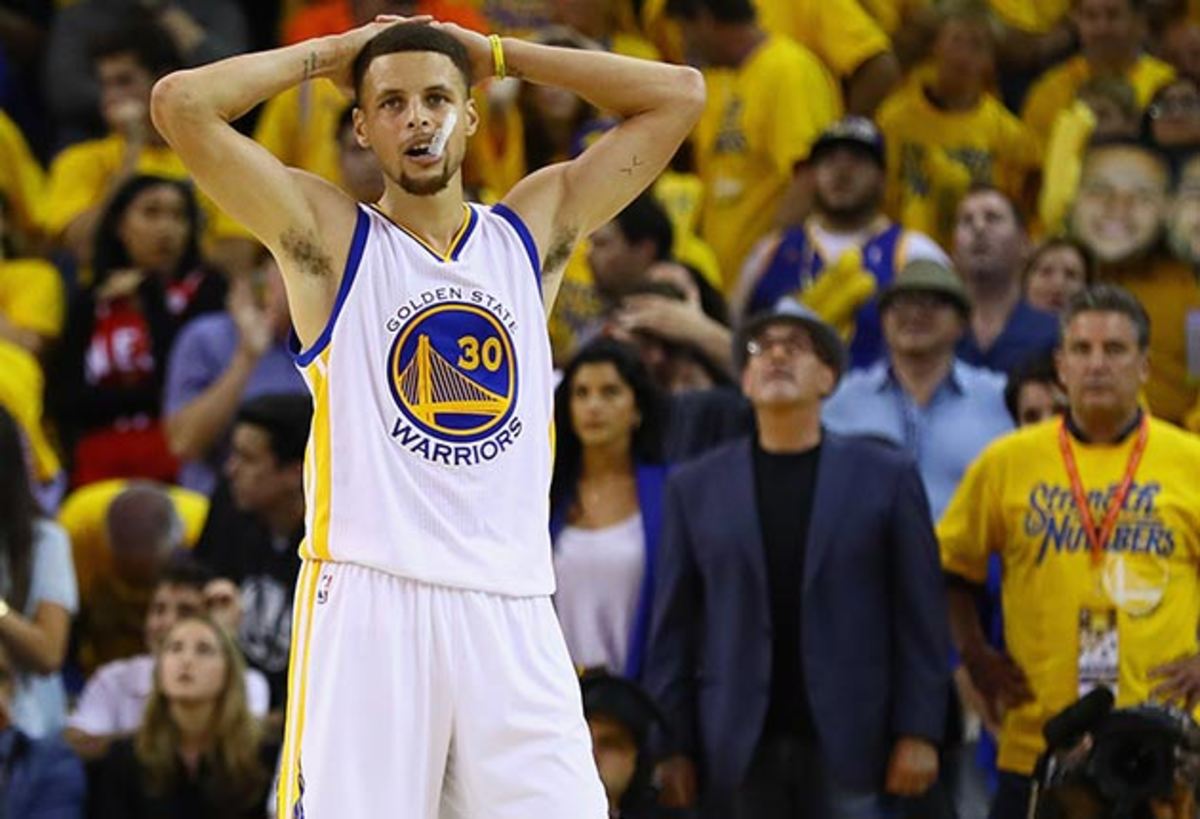
Golden State Warriors
Team needs: Rim protection, bench scoring, two-way forwards
Picks: 30
2015-16 results: 73–9, lost in Finals
There’s really no time for the Warriors to lick their wounds—this is a pivotal off-season for them, and that sounds really weird to say for a team that just won 73 regular–season games. Restricted free agency is on deck for Harrison Barnes and Festus Ezeli, both of whom were pretty awful in the Finals and are still set to command insane amounts of money. Golden State has to pay Steph Curry in full after next season and likely can’t (or won’t) commit to matching offers for both.
However, it leaves some room for the Warriors to re-evaluate their role-player situation. It would be great for them to find a better defensive presence at center in case, say, Andrew Bogut gets hurt again. The bench unit needs someone who can consistently create a shot. If there’s a player they can develop to eventually replace Barnes and Andre Iguodala at forward, that also makes sense. The Dubs kind of need to hit on this pick.
• 2016 NBA draft position rankings: Best guards, wings and big men
Houston Rockets
Team needs: Playmaking, shooting, someone who can play center
Picks: 37, 43
2015-16 results: 41–41, lost in first round
First, assume Dwight Howard is gone. With Mike D’Antoni now at the helm, it’s easy to look at this roster and see the Rockets trying to go small, run and jack even more threes than usual (30.9 attempts per game was second-most in the league). James Harden’s turnover issues make finding someone to handle the ball even more critica. Two mid-draft selections in a thin guard draft make it tough to expect much Thursday.
The Rockets should be able to address their frontcourt depth with their picks. Whether it’s rolling the dice with another stretchy four-man or trying to develop a rim protector, Houston could use some help down low. Beyond Clint Capela, who is probably starting at center right now, there’s nary a serious long-term prospect on the roster.
Indiana Pacers
Team needs: Wing players, frontcourt depth, three-point shooting
Picks: 50 | Update: Traded No. 20 to Brooklyn
2015-16 results: 45–37, lost in first round
Last season was a mixed bag for the Pacers, but Paul George’s clean bill of health and the emergence of Myles Turner offers some hope for the future. Larry Bird wanted Indiana to play smaller and faster, and it only sort of worked sometimes. They can renew their commitment to that stylistic shift through the draft.
George doesn’t love playing power forward, and the Pacers should probably already be catering to that in the interest of keeping him past 2018. Another athletic guy who can hit a jumper and guard the four would be nice, as would anyone that can consistently space the floor, really. It’s tough to play the way they want to with Monta Ellis chucking at shooting guard and C.J. Miles matching up with much bigger guys.
Update: The Pacers added Jeff Teague in a Wednesday trade that sent George Hill to the Jazz. Reports indicate they’ll try and keep him long-term, eliminating a major hole from Indiana’s checklist. They then dealt their first-round pick, No. 20, to the Nets to add Thaddeus Young. Indiana addressed two big positional needs ahead of the draft and could now use a wing player to compliment George and Teague.
Team needs: Perimeter defense, frontcourt depth, Backup point guard
Picks: 25, 33
2015-16 results: 53–29, lost in first round
The Clippers have reached a serious crossroads, perhaps more crucial than last year’s Zero Dark DeAndre situation. Last year’s injury-plagued season ended somewhat awash. Chris Paul and Blake Griffin can opt out after this season and could get traded. Doc Rivers has talked about blowing things up before. This is one of the league’s more unpredictable situations.
Assuming the core is intact, L.A. will have to turn things around quicklt. That means determining whoever the most NBA-ready guys are at their spots. The Clippers have no real stoppers on the wing, little interior depth (particularly if Jeff Green leaves) and are in dire need of someone to take care of the ball besides Chris Paul. Yes, there’s a good chance Austin Rivers is coming back.
Los Angeles Lakers
Team needs: High-end talent, perimeter shooting, size
Picks: 2, 32
2015-16 results: 17–65, missed playoffs
The Lakers can use pretty much everything and anything. If Ben Simmons indeed goes first and they don’t screw this up, Brandon Ingram is really a perfect fit. They have to commit to D’Angelo Russell and hope Julius Randle becomes a legitimate starter. Larry Nance Jr. had positive moments as a rookie. Projecting Ingram as the eventual primary scorer in this group makes a lot of sense. He’s going to be able to put the ball in the basket. He might be the guy to drag them out of the abyss.
At No. 32, the Lakers should look to address the center position, which they should be able to upgrade in that range. Keeping Roy Hibbert around doesn’t make much sense. Finding someone to cover for Randle’s defensive shortcomings would seem prudent. If Luke Walton brings the Warriors’ philosophies with him to Los Angeles, look for him to gamble on an athletic, shot-blocking big to develop.
Memphis Grizzlies
Team needs: Wings, backup point guard, shooting
Picks: 17, 57
2015-16 results: 42–40, lost in first round
Dave Joerger is out, David Fizdale (Grizzdale!) is in, but the grit and grind should continue. Marc Gasol needs to be healthy and Zach Randolph needs to fight the attrition, plus there are a ton of moving parts, but the Grizzlies may not be quite done with some shrewd tinkering. Needless to say, if Mike Conley is gone, they won’t just need a backup point guard. It feels like we’ve been pointing this out since Pau Gasol’s days in Vancouver, but the Grizz are still in desperate need of talent on the wing, and shooting, period.
There should be something useful to add to the mix at No. 17, but there’s also no clear NBA-ready home run. All things considered, there are enough roster holes and impending free agents that Memphis should be in position to go best player available. It can’t get any worse than last season’s injury bloodbath.
• Special Delivery: Dragan Bender could be NBA's next Croatian star
Miami Heat
Team needs: Three-point shooting, interior depth, bench scoring
Picks: None
2015-16 results: 48–34, lost in East semifinals
The Heat don’t have a pick, and though they could conceivably trade into the draft, their off-season priorities skew heavily toward sorting out free agency. Dwyane Wade and Hassan Whiteside need new contracts. Miami might get priced out on the latter. The state of Chris Bosh’s health is obviously a huge deal. After striking gold in last year’s draft with Justise Winslow and Josh Richardson, there’s not a pressing need to inject youth on draft night.
Milwaukee Bucks
Team needs: Center, point guard, shooters
Picks: 10, 36, 38
2015-16 results: 33–49, missed playoffs
Things are starting to get compelling in Milwaukee as we enter year three of the Jason Kidd era. Giannis is already awesome. Jabari Parker is getting there. Khris Middleton is solid. Those are three dynamic pieces any team would love to have, all under long-term control and with staggered contract years. The Bucks are in position to add to the smorgasbord, but the flipside is that the perfect fit may not be there at No. 10.
No observer is really sold on Michael Carter-Williams, and point guard Giannis doesn’t feel that sustainable, so finding an actual, real decision-maker that can defend his position and make a jump shot would be nice. Even someone with two of those three traits would probably be fine.
• Gallery: NBA teams that have beaten the draft lottery odds over the years
Beating the NBA Draft Lottery Odds
1993 Orlando Magic
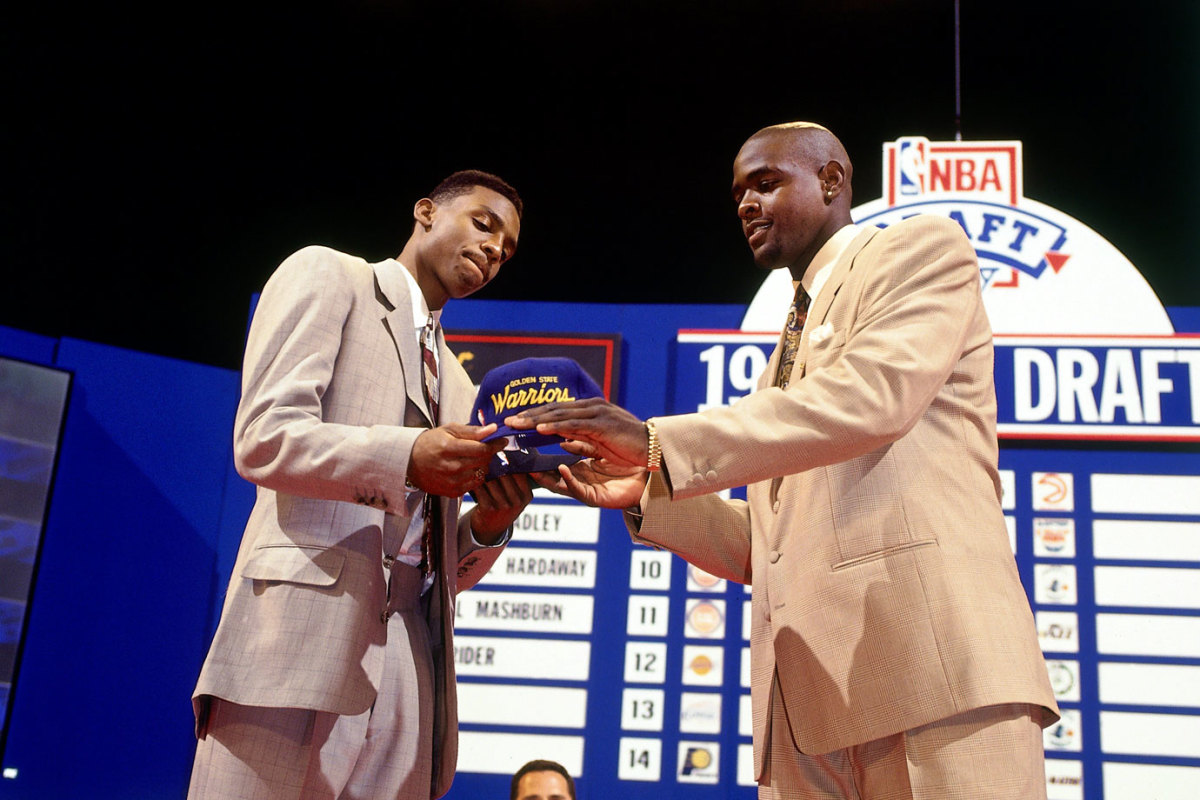
No team beat the odds quite like the 1993 Magic, who, after barely missing the playoffs at 41-41, made good on their 1.5% chance (1 Ping-Pong ball out of 66) to claim the top spot for the second consecutive season (they had snagged Shaquille O'Neal in '92). Orlando wound up selecting Chris Webber and trading him to Golden State for third overall pick Penny Hardaway and three first-round picks. Two years later, Shaq and Penny led the Magic to the NBA Finals.
1995 Golden State Warriors
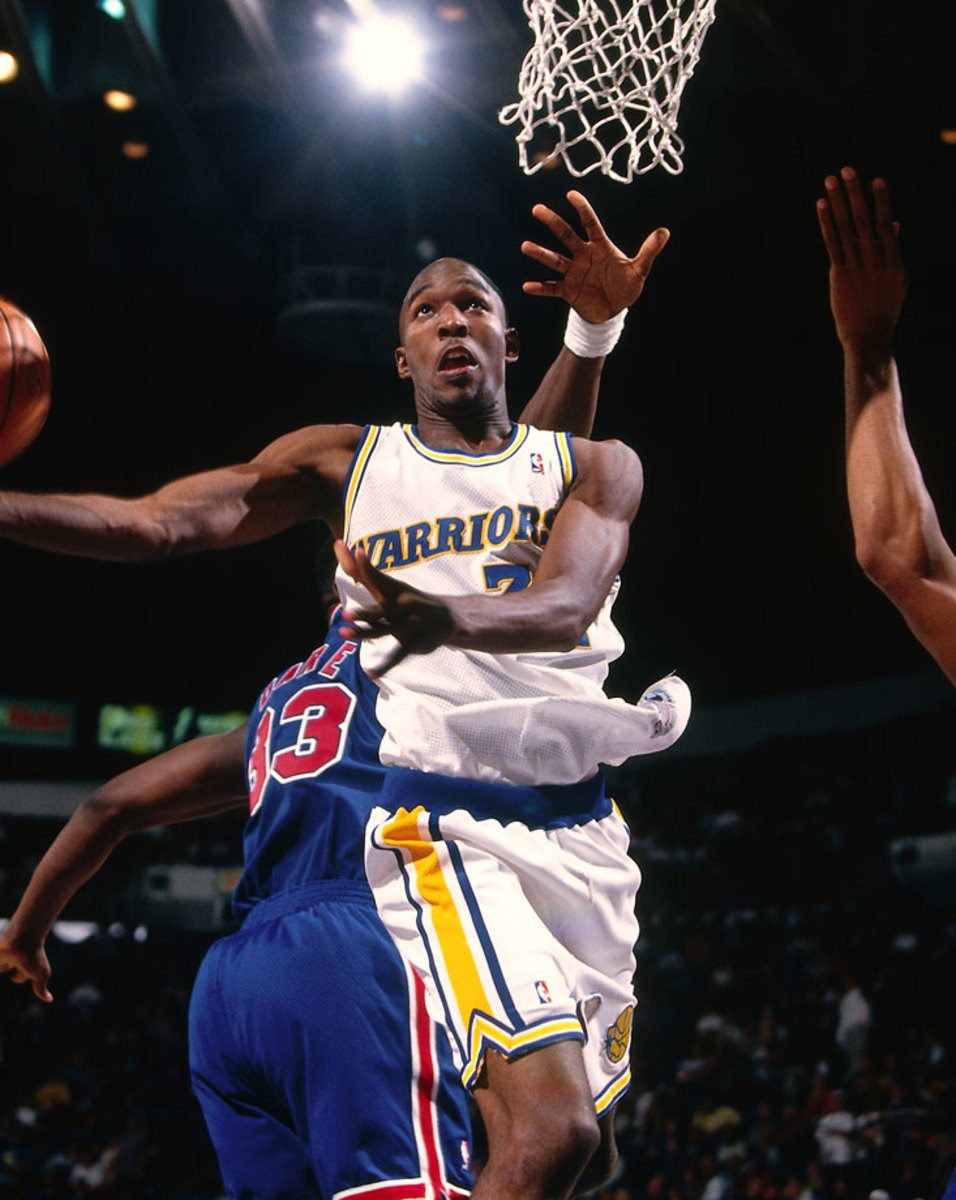
After the Warriors delivered on their 9.4% chance, then-general manager Dave Twardzik said, ''Whoever you take, some people are going to say, 'How could pass on this [other] guy?' '' Twardzik experienced the second-guessing first-hand: The Warriors chose forward Joe Smith while the rest of the top five was Antonio McDyess, Jerry Stackhouse, Rasheed Wallace and Kevin Garnett. Smith went on to play for 12 different NBA teams over 15 years, never once named an All-Star.
2000 New Jersey Nets
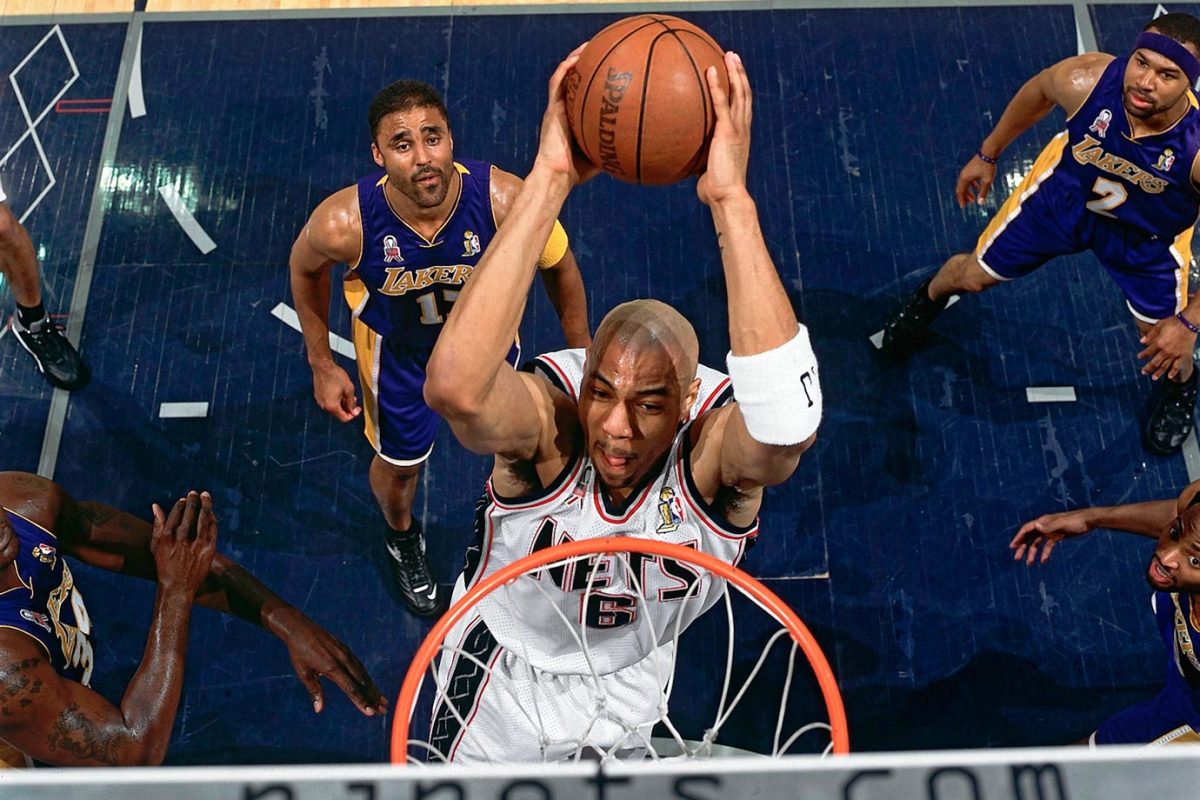
Pegged to draft seventh after a 31-51 season, the Nets instead cashed in on their 4.4% chance of winning the lottery. New Jersey picked forward Kenyon Martin, who proved to be a key part of back-to-back Finals teams in 2002-03 before being shipped to Denver as part of a sign-and-trade deal in 2004.
2002 Houston Rockets
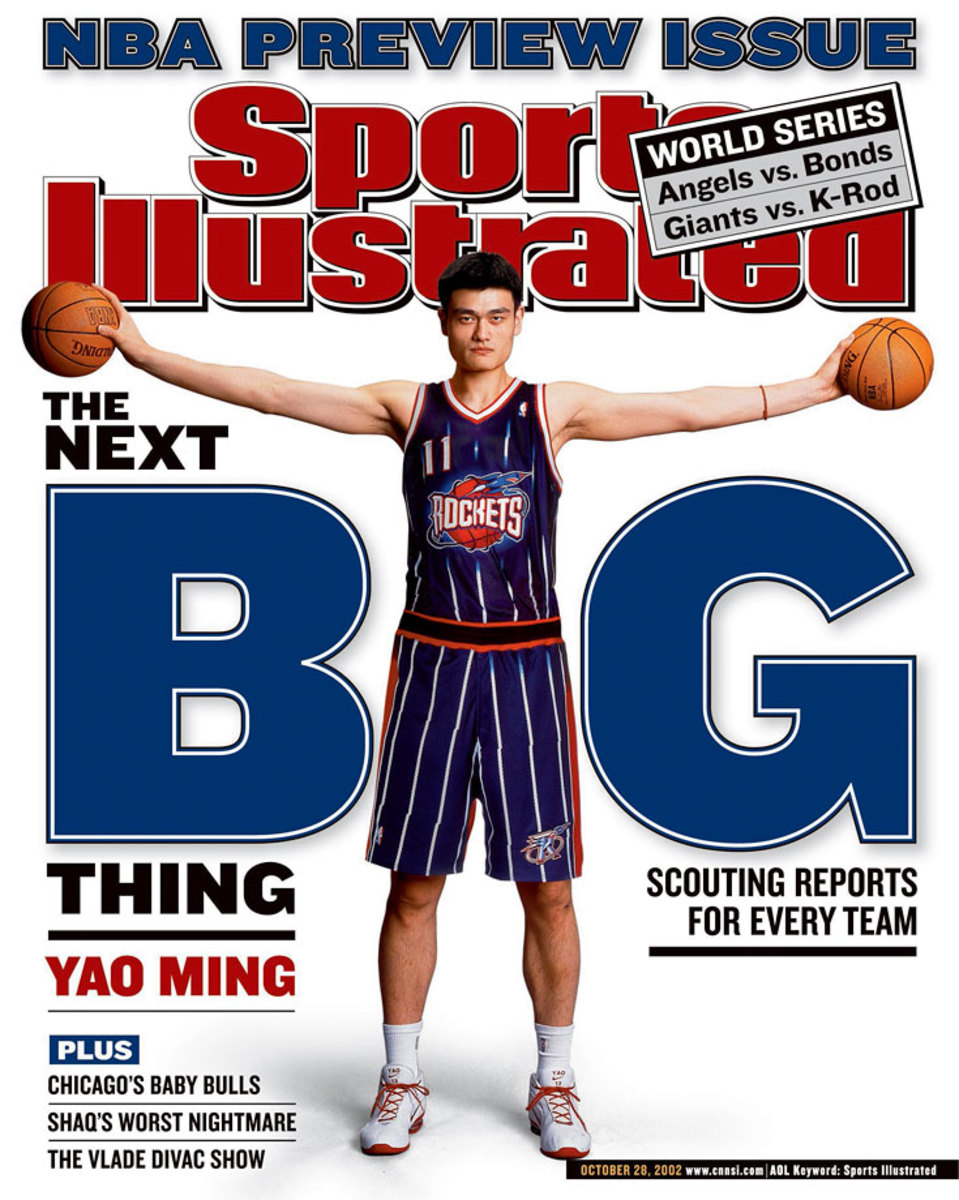
An 8.9% chance was enough for the Rockets to leapfrog four teams and win the Yao Ming sweepstakes. Yao was productive when healthy, but the healthy part didn't happen nearly as much as Houston would have hoped. The 7-6 center retired in July 2011 after nine seasons in which he averaged 19 points, 9.2 rebounds and 1.9 blocks.
2005 Milwaukee Bucks
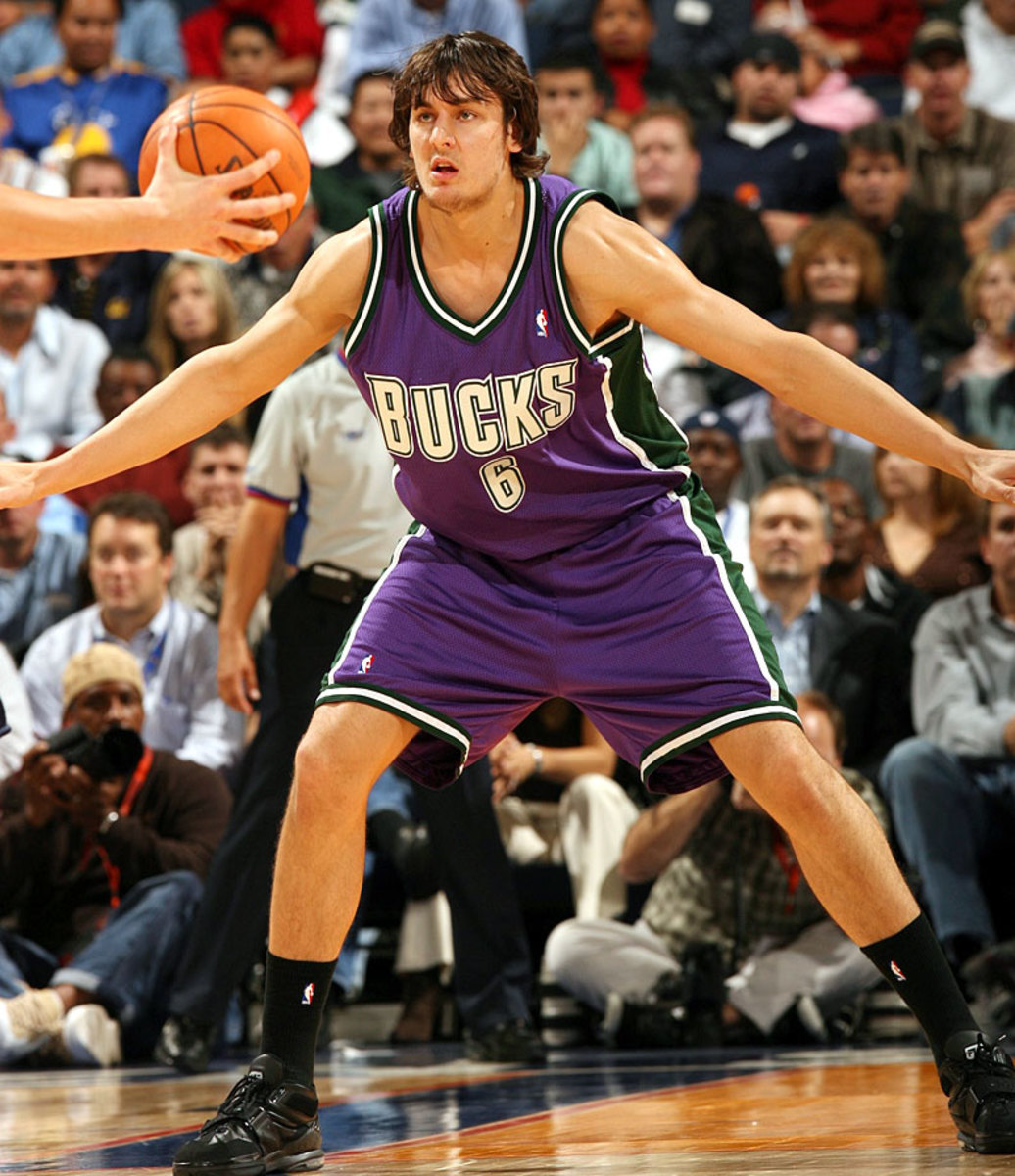
The Bucks, with a 6.3% chance, jumped from sixth to first and selected center Andrew Bogut ahead of point guards Chris Paul and Deron Williams. Bogut spent seven years with the Bucks, where he led the league with 2.6 blocks in 2010-11, before being traded to Golden State in 2012.
2006 Toronto Raptors
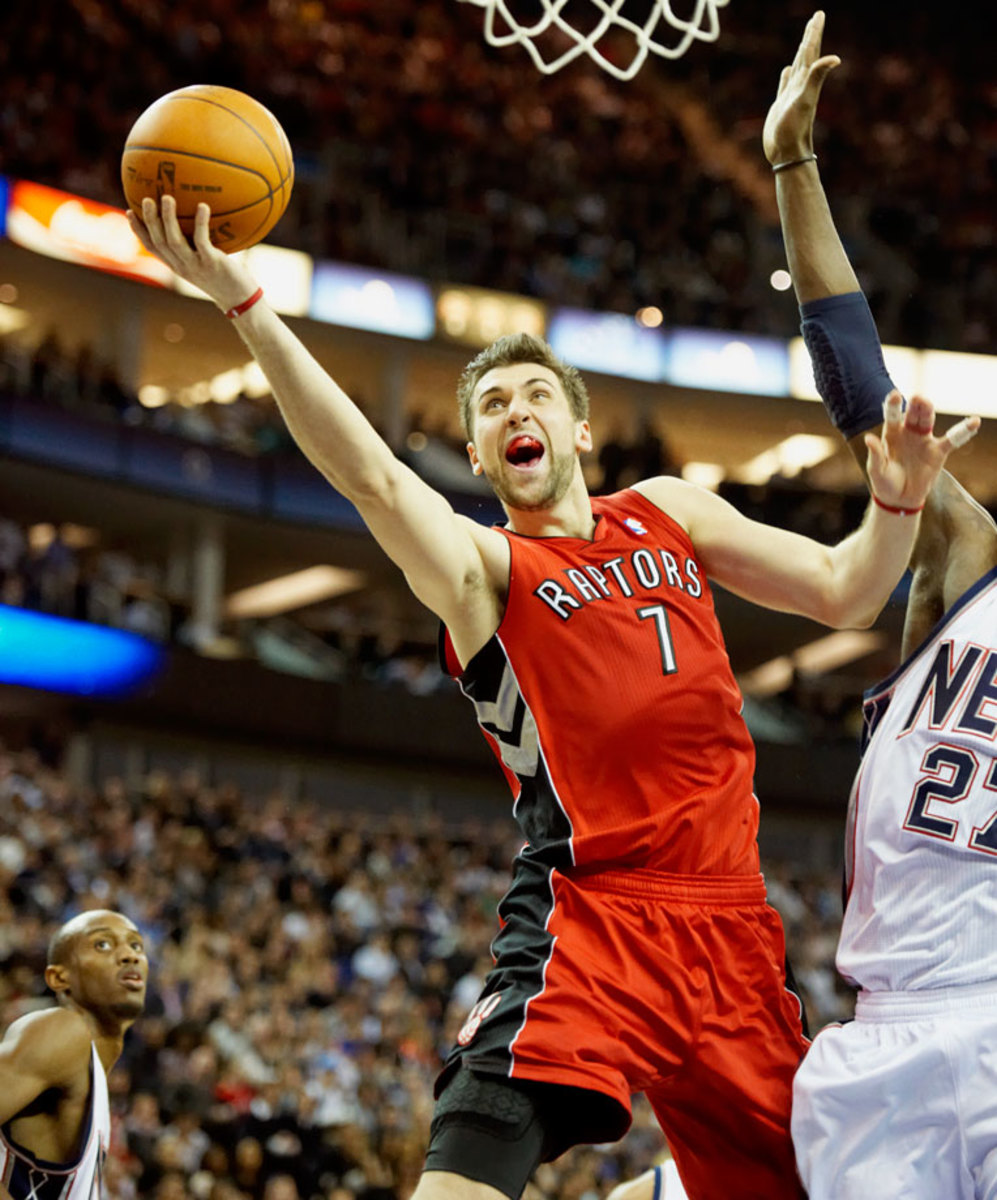
General manager Bryan Colangelo entered his first draft in Toronto with the biggest prize after the Raptors vaulted to the top despite only an 8.8% likelihood. The Raptors used the choice to make Italy's Andrea Bargnani the NBA's first European No. 1 pick. Bargnani averaged a career-high 21.4 points in 2010-11 and followed that with 19.5 points in an injury-shortened 2011-12, but he's been criticized for his defense and rebounding. In 2013 Bargnani was traded to the Knicks, where injuries have kept him off the court more often than not. The Nets signed Bargnani to a multi-year contract in 2015, only to waive him in Feb. 2016.
2007 Portland Trail Blazers
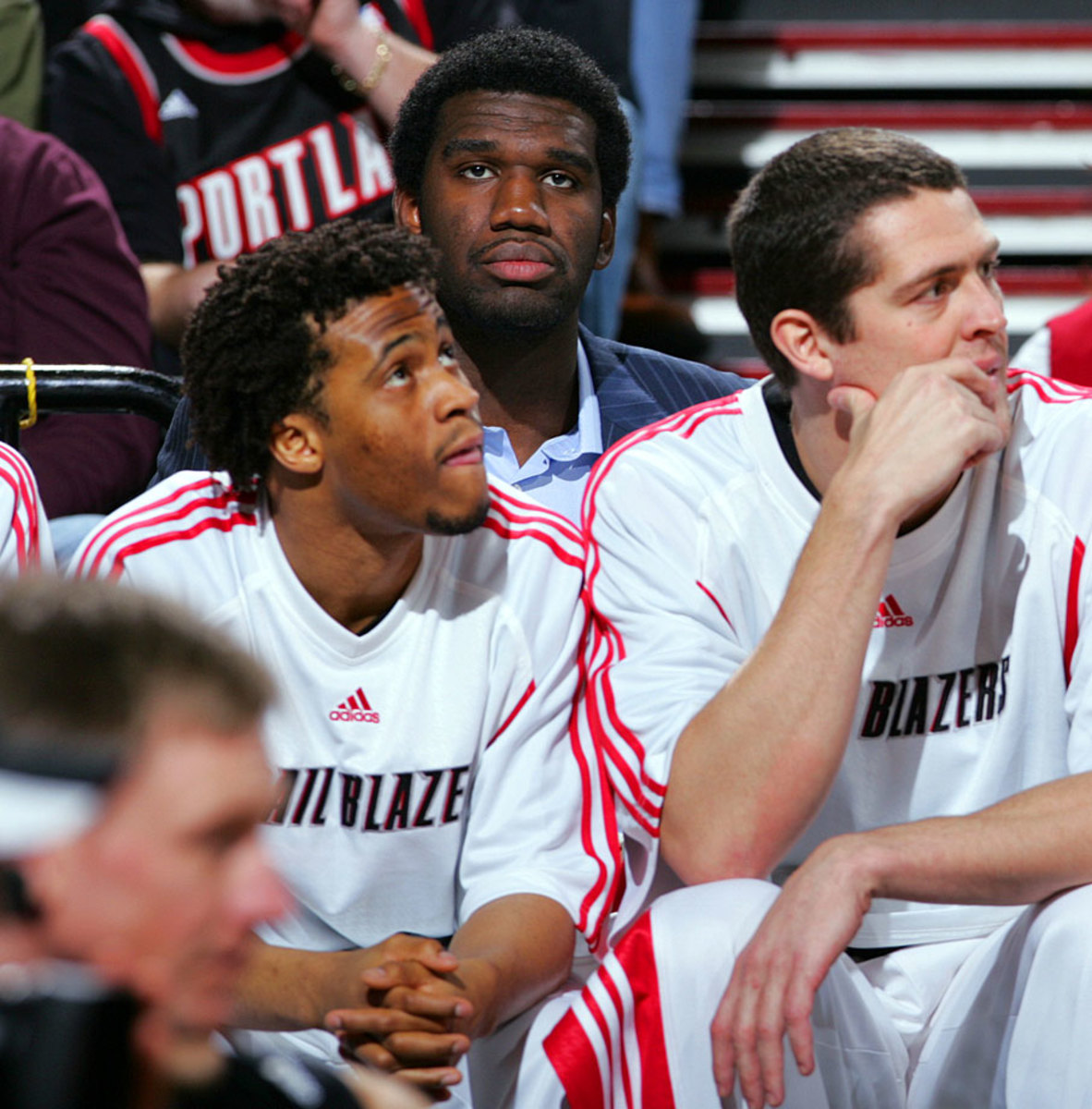
While the teams with the three worst records — Memphis, Boston and Milwaukee — got the fourth, fifth and six picks, Portland won the lottery with its 5.3% chance. The windfall didn't pay off, however, as the Trail Blazers passed on Kevin Durant in favor of Greg Oden, who played only 82 regular-season games over his first five seasons because of persistent knee injuries. The Blazers waived Oden in March 2012 and after a brief stint with Miami two years later, Oden hasn't played since.
2008 Chicago Bulls
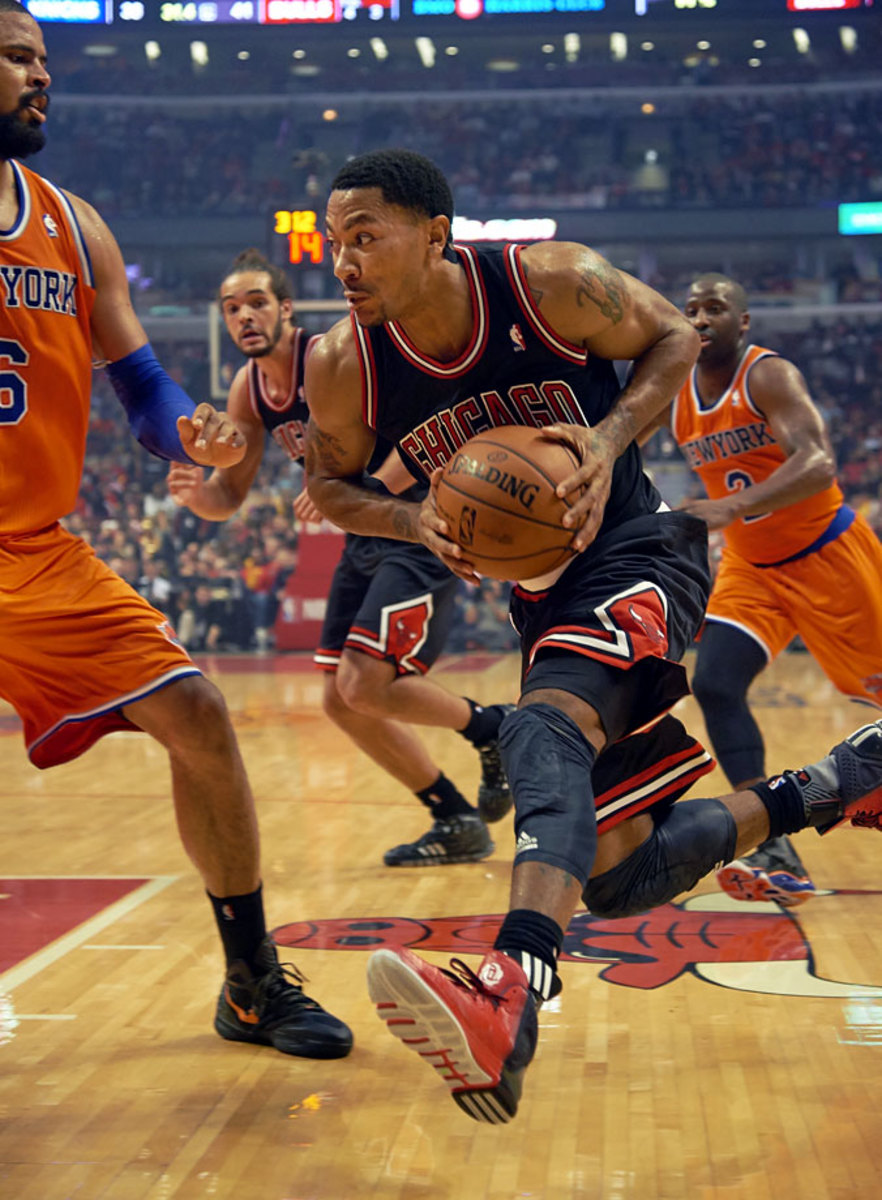
The Bulls turned their 1.7% chance into the first pick. Chicago selected native Derrick Rose, who was the 2008-09 Rookie of the Year, the league MVP in 2010-11 and a three-time All-Star. Since May 2012, however, Rose has undergone three knee surgeries which have caused him to miss a significant amount of time.
2011 Cleveland Cavaliers
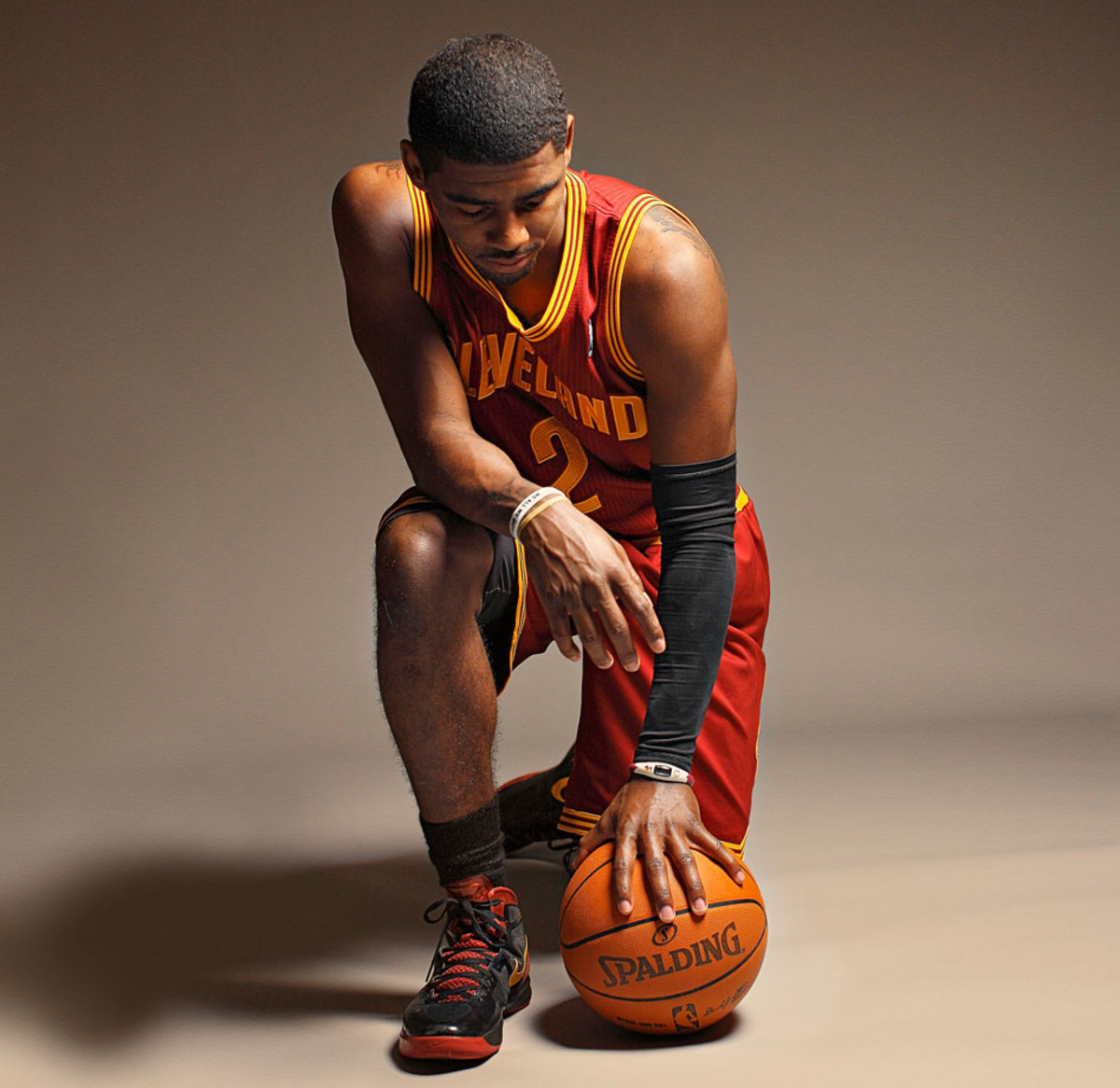
The Cavaliers used the pick obtained in a trade with the Clippers to win the No. 1 pick despite just 2.8% odds. That put them in position to draft Duke point guard Kyrie Irving, who turned into the Rookie of the Year and the centerpiece of their post-LeBron rebuilding effort. The 2013, '14 and '15 All-Star was given some help entering the 2014-15 season with the signing of free agent LeBron James.
2014 Cleveland Cavaliers
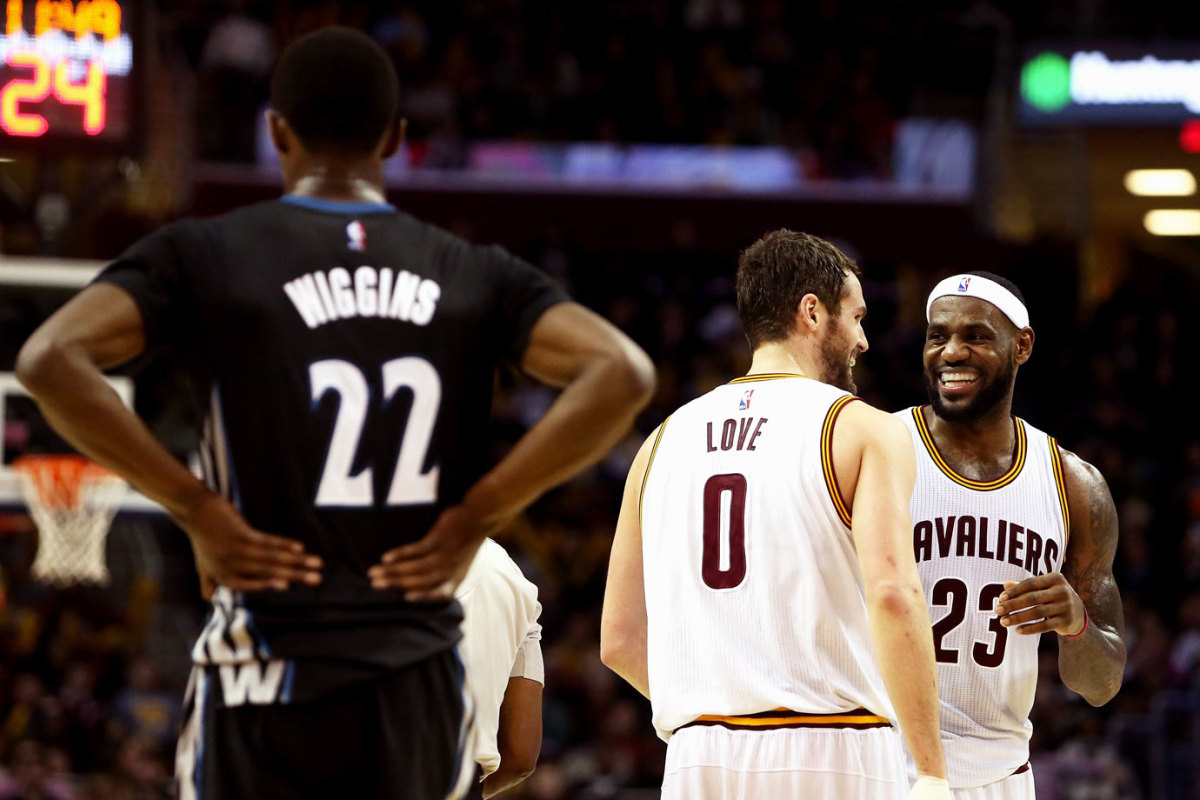
Eight teams had better odds than the Cavaliers, who lucked out yet again with just a 1.7% chance this time. Their selection of Andrew Wiggins parlayed into a trade with Minnesota to acquire Kevin Love two months later. Wiggins went on to win Rookie of the Year with the Timberwolves while Love's numbers dipped with the Cavs and he suffered a dislocated shoulder in the team's 2015 first-round sweep of the Celtics.
Minnesota Timberwolves
Team needs: Shooting, defensive-minded personnel, backcourt depth
Picks: 5
2015-16 results: 29–53, missed playoffs
One way or another, the rich are about to get richer. Whether the Wolves can parlay their pick and assets into a starting-caliber player or just decide to add to another piece to an enviable young core, they’re poised to take a step forward if everything breaks correctly. Karl-Anthony Towns is the killer bass line, Andrew Wiggins is the catchy hook, and all that’s left for Thibs to do is fill in a few hard-nosed, icy verses. Cue up your airhorn.
The Wolves can go a few different routes at five, likely taking one of the top three guards in Kris Dunn, Jamal Murray or Buddy Hield. Dunn is a quintessential Thibodeau guy, Hield can step in and space the floor from day one and Murray has the most long-term potential as a scorer, but also requires the most patience. We’ll get a sense of how the Timberwolves asses their own timetable for competitiveness by how they draft.
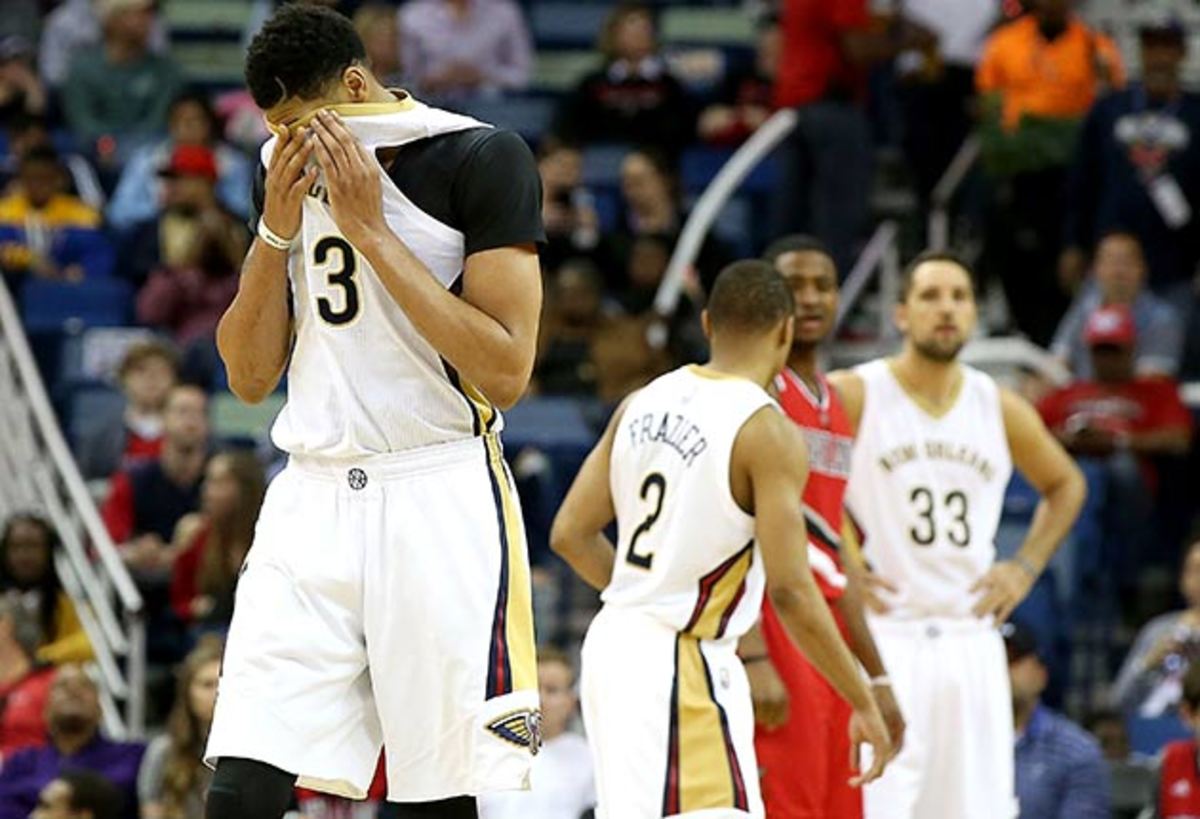
New Orleans Pelicans
Team needs: Long-term assets, bigs, playmakers
Picks: 6, 39, 40
2015-16 results: 30–52, missed playoffs
It should be so easy, finding the right interior partner for one of the league’s best two-way bigs in Anthony Davis, but the Pelicans in recent years have yet to find a serviceable option. Perhaps that player is there at No. 6, maybe he arrives through trade, maybe New Orleans continues to bide its time, but the clock is starting to tick a bit. Maybe Davis is best suited as a forward with greater offensive freedom, or he could conceivably anchor the right smaller, spread lineup—maybe both.
The Pelicans are also justified in taking a guard, given Jrue Holiday and Tyreke Evans are a year away from free agency. It’s unclear how those two guys, once considered building blocks, actually fit into the long-term plan. New Orleans often feels rudderless, so much so that you just hope they’ll commit to trying something different.
New York Knicks
Team needs: Competitive NBA talent
Picks: None
2015-16 results: 32–50, missed playoffs
The Knicks, and their fans, got through last season by talking themselves into Kristaps Porzingis as a franchise player. Who doesn’t want to be down with that? But the magic of actually getting a pick correct only lasts so long, and Carmelo and Robin Lopez aren’t taking this team anywhere without more help. If the Knicks are smart, they’ll find a way to get into this draft and build up assets. But are they?
Update: After acquiring Derrick Rose from the Bulls in a major trade that included Lopez on Wednesday, the Knicks are now in need of a rim protector at center to pair with Porzingis. They’re still riddled with holes around the roster, but Rose and Anthony give the team some star power as the franchise pushes forward.
Oklahoma City Thunder
Team needs: Kevin Durant, two-way wings, shooting
Picks: None
2015-16 results: 55–27, lost in West finals
We can't talk Thunder without brining up Kevin Durant for a second. They need him to stay. Moving on: OKC came extremely close to messing with the outcome of these playoffs and will bring pretty much everyone back. They don’t have a pick and don’t necessarily need one—the odds of them trading in to where they can find a rotation-ready piece are slim. Maybe they get into the second round and stash someone. It shouldn’t be a complicated draft process for the Thunder, regardless.
Orlando Magic
Team needs: High-end talent, rim protection, three-point shooting
Picks: 11, 41, 47
2015-16 results: 35–47, missed playoffs
The Magic have a ton of flexibility going forward, with Nikola Vucevic the only young asset currently on his second contract. They could use an impact player with star potential, but at No. 11 the pickings aren’t easy. Mario Hezonja’s going to get buckets, Victor Oladipo keeps getting better, but there’s a lot of projection still involved despite the young talent on the roster.
As far as immediate needs go, a shot-blocking center to platoon with Vucevic would be a huge help in patching up the defense. The Magic were in the middle of the pack shooting from deep last year (35%), but Evan Fournier was their only reliable marksman. If they’re going to commit to Elfrid Payton at the point, he has to have shooters around him. Orlando has enough already in place to gamble a bit on upside.
• Scouting Buddy Hield, the best shooter in this year's NBA draft
Philadelphia 76ers
Team needs: Elite talent, playmaking, wing scoring
Picks: 1, 24, 26
2015-16 results: 10–72, missed playoffs
All signs point to the Sixers taking Ben Simmons, and that fills a host of needs right away. Their rebuild needed a face, and here he is. They get an elite prospect who can pretty much play anywhere. He’s bulked up to where you think he might be able to defend some bigs, which also helps. If he can elevate his teammates and impact the game in several ways, he’ll be totally worth it. Just don’t bank on him scoring 20 per game right away.
The Sixers need to continue compiling talent, and have a lot of flexibility accordingly. If they cut a deal with one of their big men leading up to or during the draft, then the priorities change with their other first-round picks. Perimeter help and another ballhandler they can develop would be nice. Even with Simmons coming to town, remember that Philly is still playing the long game.
Phoenix Suns
Team needs: Power forward, perimeter defense, floor spacing
Picks: 4, 13, 28, 34
2015-16 results: 23–59, missed playoffs
The four-spot is glaring for Phoenix…especially after all the two-center lineups they tried down the stretch last season. They’ll enter the season with their deep backcourt fully healthy, but they need to find another big to pair with Alex Len long term. If they’re comfortable with one of the stretch-fours available at No. 4, it’s an obvious decision.
As for the Suns’ other picks, expect the team to be active in trade talks and probably stash a player or two. A complimentary wing defender and/or another player that can make shots would be helpful. Phoenix needs to stockpile talent, but their history of recent decision-making has been questionable. There’s no immediate fix here.
Portland Trail Blazers
Team needs: Perimeter defense, frontcourt talent
Picks: None
2015-16 results: 44–38, lost in West semifinals
After a surprising step forward last season, it would make sense for the Blazers to move into the draft and add another long-term piece to the mix. Their backcourt is obviously in great shape with Damian Lillard and C.J. McCollum. If they acquire a pick, look for the Blazers to shore up their talent level up front or target help on the wing. They have a good history with developing players and have enough parts under contract to wait on a higher-upside guy.
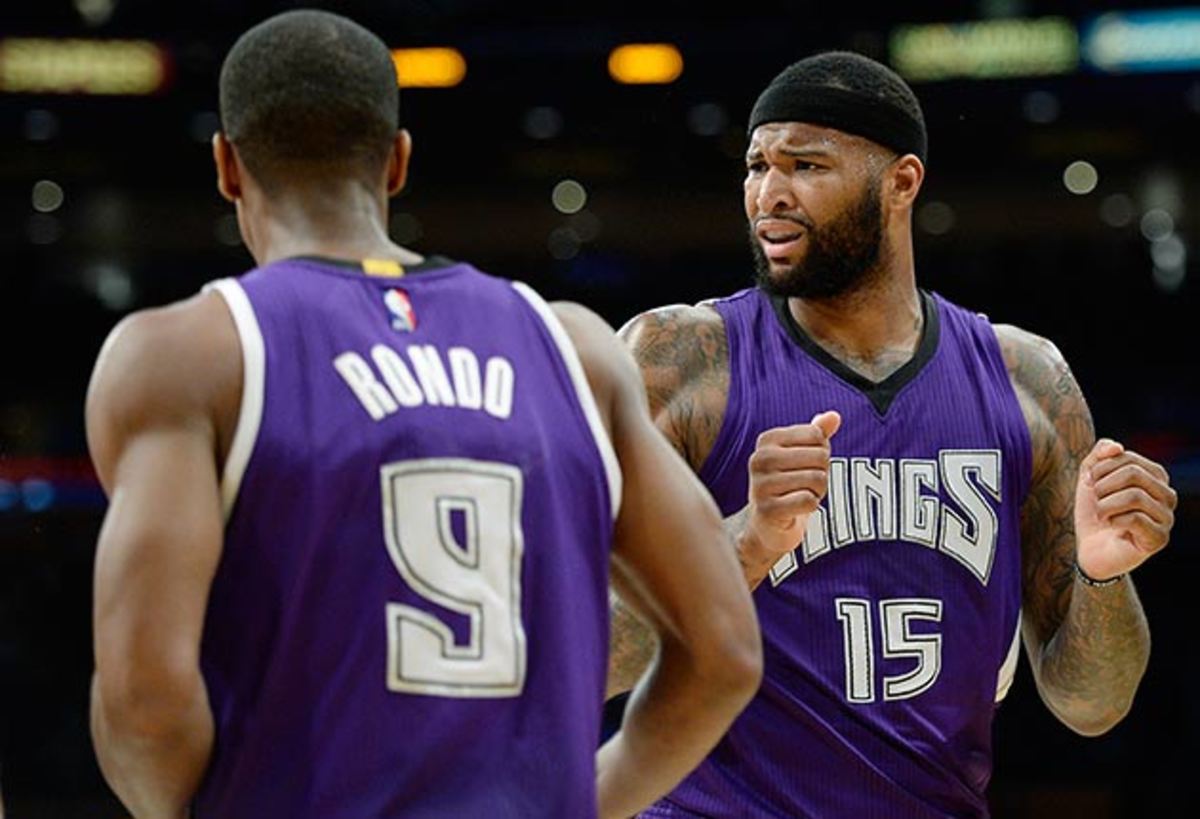
Sacramento Kings
Team needs: Point guard, three-point shooting, general sanity
Picks: 8, 59
2015-16 results: 33–49, missed playoffs
Dave Joerger and a new arena give the Kings a little wiggle room for hope. Logical decision-making could augment that nicely. Rajon Rondo could be gone, Darren Collison is facing domestic violence charges, and a long-term fix at point guard would be great, although that player likely won’t be around at No. 8. They could also use shooting and improved floor spacing at the shooting guard and power forward spots.
Chief among Vlade Divac’s tasks will be changing the energy with this group, which would be no small feat. Finding a player that’s a fit for whatever culture the Kings plan to instill would be a huge boost. Whatever they do, they better keep DeMarcus Cousins happy.
San Antonio Spurs
Team needs: Rim protection, three-point shooting, guard depth
Picks: 29
2015-16 results: 67–15, lost in West semifinals
Surprise, surprise: the Spurs should contend again next season! The respective fates of Tim Duncan and Manu Ginobili are important, but more in the sense of knowing how much roster wiggle-room the team will have. Finding a defensive partner for LaMarcus Aldridge and a versatile shooting guard are on the docket regardless of what the future Hall of Famers decide. Of course, San Antonio could go the Euro route, but if a player who’s a great fit for their culture is hovering at 29, they should pounce. Their draft acumen is hard to argue with.
• The Promise Keeper: LeBron's dreams come true with Cleveland title
Toronto Raptors
Team needs: Immediate help, big man depth, three-point shooting
Picks: 9, 27
2015-16 results: 56–26, lost in East finals
It was a banner year for the Raptors in many ways, and assuming DeMar DeRozan comes back, there’s no reason they shouldn't be able to improve next season. If they keep the pick, they’ll likely look for a piece that can help at No. 9, whether it be a stretch four, perimeter scorer or defensive-minded big to replace Bismack Biyombo.
The Raptors have been comfortable waiting on talent in the past (Bruno Caboclo is what, three years away now?), so it wouldn’t be surprising for Masai Ujiri to just draft the best talent, either. Really, the forward spots have been a revolving door for Toronto. DeMarre Carroll, Terrence Ross and Patrick Patterson have been passable but not stellar. Adding a potential part to that group with either of their selections would be ideal.
Utah Jazz
Team needs: Best player available, point guard
Picks: 42, 52, 60 | Update: Traded No. 12 to Atlanta
2015-16 results: 40–42, missed playoffs
Perhaps more than any other team, the Jazz can draft talent. If there’s a positional need, it’s point guard, but their roster is well-rounded and still very young, with a nice long-term piece at every position. Dante Exum is the wild-card among them, and his return to the court from injury might be their biggest X-factor this season. Utah’s not far from the playoffs, but unless they happen upon value at No. 12, they can afford to dream big. Expect them to keep at least one of their second-round selections overseas.
Update: The Jazz addressed their need at the point by acquiring George Hill from the Pacers in a three-team deal on Wednesday and sending the No. 12 pick to the Hawks. They no longer have a first-round selection and can take fliers in the second.
Washington Wizards
Team needs: Backcourt depth, long-term bigs
Picks: None
2015-16 results: 41–41, missed playoffs
The Wizards don’t have a pick and are probably in a bit of a roster freeze until Kevin Durant gives them a hard no. They’ve yet to see what they have in last year’s first-round pick, Kelly Oubre. But if they slide into the draft at any point, finding some eventual help at center to supplant Marcin Gortat or adding to their backcourt behind John Wall and Bradley Beal are the two clear roster holes. This is probably a team that addresses its issues through free agency, one way or the other.
